#it's really cool how it just keeps getting worse for both creators and users on youtube. also cool that there aren't really any alternatives
Explore tagged Tumblr posts
Text
remember when youtube was usable without several extensions and ublock origin with at least 12 UI elements custom filtered.
#it's really cool how it just keeps getting worse for both creators and users on youtube. also cool that there aren't really any alternatives#ublock origin is a godsend though. the 'adblockers aren't allowed on youtube' popup began to affect me but updating ublock fixed it#they have an ongoing reddit thread that has updates on their latest anti-anti-adblock measures btw#if it stops working for you I recommend looking at it
22 notes
·
View notes
Text
Some thoughts on various other social media/microblogging websites.
"Pillowfort.social is a new blogging platform where fans and creators alike can share their work, create a community of their own, and do so in a positive and safe environment. Pillowfort aims to be a sort of hybrid of your favorite blogging websites-- keeping the strengths of these platforms while compensating for their shortcomings." Dumb. Terrible name, hate it. Also it just looks like Tumblr so it seems like just another Tumblr clone, but they allow porn.
"We are a free and open-source platform to launch your digital brand, social network and mobile app. We are also a social network ourselves. It is a global social network of social networks. Available in either decentralized or centralized options."
So it's a social media network where you start your own social media network? Shut the fuck up.
"Image enthusiasts united. Discover, repost, contribute and share images stupid simple. Looking for an Tumblr & Reddit alternative, maybe for NSFW content , Thumbtable has you covered."
So like, okay I get that like if you sell NWS content, the Tumblr ban affected you financially and that's not very cool. My issue with the dozens of Tumblr-esque sites, but they allow porn, is that none of them have any users. So who are you selling your content to? Wouldn't it be better to just go on Twitter, where there are more users than Tumblr anyway?
"monocles social is based on mastodon. A privacy friendly social network."
I want every person registered for this site to die.
"Authpad is a frictionless approach to blogging."
Are people like, having issues with blogging that I'm not? Because I feel like this is pretty easy.
"The Dayum is first all in one website on the internet. See the most viral videos, read breaking news, and connect with friends and people around the world!"
So it's like Facebook but for people who are even less connected with the world? That's cool I guess. Stupid name though.
"Known is a simple platform for publishing words, pictures, podcasts and more to a site that you control. Choose to share it on social networks like Twitter and Facebook, or extend it to integrate with the software you already use."
Why does every site act like Facebook or Twitter integration is this desirable feature? If I want to post something to Facebook or Twitter, I'll just post it there. I do in fact post a lot of my text posts to Twitter and Bluesky and sometimes post images to Instagram. It's just easier to do it manually, I don't need every website to be attached to every other account I own. It's fine.
"Squabbles is a new social platform which combines elements of Reddit and Twitter. It takes the best of both worlds where you can both follow the people you love, and have great, in-depth conversations with them and others."
This one made me laugh because like, Reddit and Twitter are pretty much the two worst websites on the planet. And this one is the best of BOTH worlds? Holy shit. Even the name sounds like bickering with people you hate on the internet. "We're Squabbling!"
"a decent(ralised) secure gossip platform sea-slang for gossip - a scuttlebutt is basically a watercooler on a ship." This just makes me miss Yik Yak. I mean, I know they brought it back, but it's not fun anymore. I used to troll Yik Yak so hard. Everyone on there was just a fucking idiot, it was awesome.
Y'know, the other thing about Tumblr clones is somehow they all are worse than Tumblr. Tumblr is the most broken website I've ever used and somehow every clone of it has less features and works worse. How is that even possible? Maybe you just can't make a functional webslte like Tumblr. It's just not possible.
"A stream server that does most of what people really want from a social network."
Whoa.
"We like to think Plurk as a social network for weirdos - the cool, uncompromising and loving community for misfits we all long to have." Lamest userbase on this list, for sure.
"Social sharing blogging friends network - Whaleshares offer its users the opportunity to earn cryptocurrency rewards for posting and sharing content that interests them and that others find value in."
I'm pretty sure nothing I've ever said in my life has any monetary value. So I guess earning cryptocurrency for saying it is actually pretty fitting.
"Whispurr is a new interactive way to stay in touch with people. We all have something to say to those that matter."
Unrelated really, but this reminds me of the app Whisper. Apparently like in cities people use Whisper to meet up and have sex and buy drugs? I mean, I guess people use every app for that so it's not that odd, but Whisper? I don't know. I never got into Whisper tbh. Probably because I live in the middle of nowhere so there's no local posts.
"The new generation social networking client for people who value their time and are tired of information noise. Requires Adobe Air."
Okay I'm sorry but

This is the most cluttered UI I've ever seen on a social network website. Fuck off.
"Member.cash is a micro-blogging platform that uses the BCH blockchain for storing posts. Posts are impossible to delete and since member.cash uses an open protocol (memo), other websites can show the same posts."
Interesting. Posts you can't delete. That seems like a feature people would want.
I don't know dude. A lot of the newer social media sites seem like they're probably based on interesting technology, I just. It's all like decentralized and self-hosted and it's not actually a website it just saves your blog to your Dropbox and everyone is their own social media site and like it all just sounds fucking retarded to me.
I'm sorry, I'm not sure that this post was entertaining or funny to begin with, but it's certainly not after it's gone on for this long. My bad.
1 note
·
View note
Text
Miraculous Ladybug Reboot Explanation
Alright, so i thought about that a summary or short passage about my Au as whole wasn’t enough explanation. Au introduction page was just little so, i wanted to explain more.
What is Miraculous Ladybug Reboot?
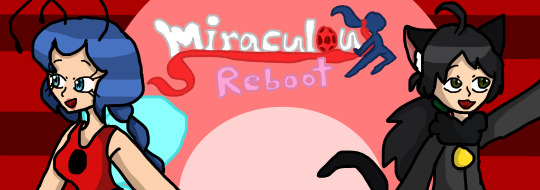
Miraculous ladybug reboot is an Au where its a mixture of the original and the concepts but in my own take/version of it.
Why you made Miraculous Ladybug Reboot?
Am late to the party but, Miraculous Ladybug has been going down hill lately. They continuously ruining characters and milking this series. They think its funny to show Marinette being a creep 24/7. And Adrien clearly have little personality and hardly show him (its really bad now in season 4, though lies show his own screentime.) Worst part, Thomas astruc can’t take criticism and blocks people (am aware some people attacks him for no reason). So i decided to make this that kinda erase the terrible things that happened in Miraculous Ladybug.
About Miraculous Ladybug Reboot
(copied and pasted from Au Introduction page)
14 years old teenage girl name Marinette Dupain-Cheng was once a normal student at Françoise Dupont Highschool. One day, Marionette was helping with parents by cleaning the attic. Marinette found a music box on the floor. She look around, decided to pick it up, and put it in her pocket. Afterwards, she decided to open the box in the her room, finding black earrings inside. She decided to try on the earrings and suddenly a creature came out of the box. The creature introduced themselves as Tikki and explained those earrings. Afterwards, Marinette decided to become a superhero known as Ladybug.
Changes
Both of the main characters getting equal amount of screentime

if the show was really about feminisms, then they show that woman and man equal. Both strong in both ways doesn’t matter. This also includes screentime.
Removing Marinette's creepiness and suffering.

(yes am using this picture, still the worst thing i ever seen in this entire show)
Her being obsessive creepy stalker is obviously not ok and teaches kids to think that doing this is ok. So am just going remove that, and keep the idea that she have a crush on him.
other thing that’s wrong if the fact they just keep making Marinette suffer and have too much stress for a teenager. She does too much work for hero, does bakery, babysits and etc. The worse of all is making her guardian. because of all this, she had to tell Alya her secret for emotional support (or something else). Am removing this because its too much stress for teen and it makes me think she have suicidal thoughts and just keeping a smile on her face around people.
Speaking of Guardian...
Marinette will not be a Guardian
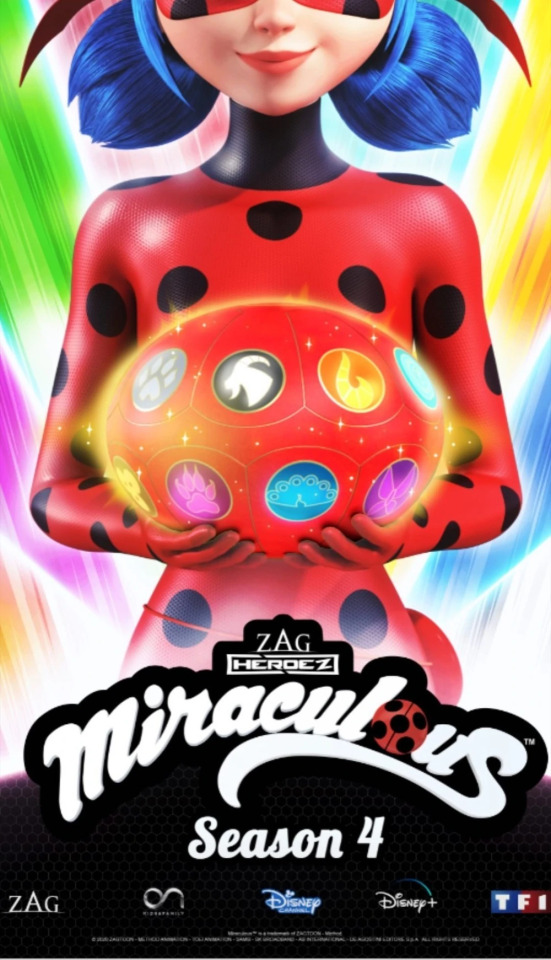
Yea, i see nothing good about her being a guardian. If anything it ruins the outcome of the entire point of love square. Even worst, she’ll just forgot Adrien anyway if she quits being guardian.
Not so much heroes
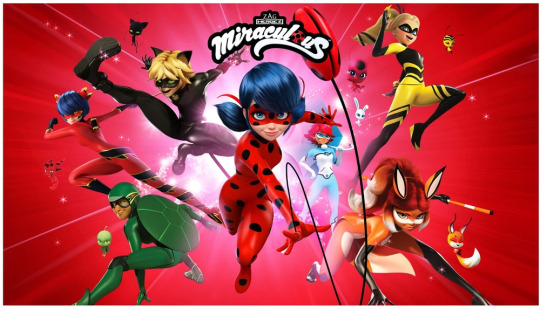
Having too many heroes takes too much time with just saying. You can’t really develop all those heroes at all. So i have shorten it out to only 5.
Chloe actually having a Development
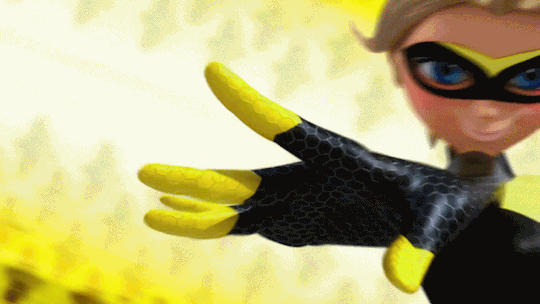
Look idc if a creator makes a character go through Treason arc. However, the way Chloe arc was written, it definitely wasn’t a Treason arc. If anything it looked like a development but the team acting like she never had one. So am just going to do the bully to antihero to hero arc scenario.
Lila being a part of the main antagonist

So basically i wanted her to be the one who starts a rival but is truly a villain who secretly hiding something from everyone.
People is not going get akumantized repeatedly as different forms instead some one else get akumantized.

I rather for the person to be akumantized either once or twice. Not the 100th time. It makes hawk moth look like a joke. So i will make it where Hawk Moth would give up the person after once or twice and attempts to find some one who can be strong enough to beat Ladybug or chat noir.
When Hawk moth defeated, there be another main villain.
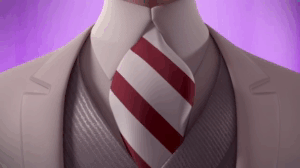
There be 7 main villains in total. All them deals with controlling some one emotion. Expect for the last one, which is like the “final” boss of the series.
Nathalie being anti-villain but still the antagonist
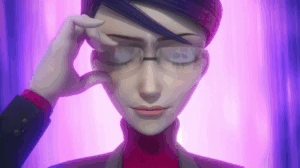
I wanted to see if i can write assistant betraying their boss. At the same time, being evil just for the sake of their boss. Sorry gabenath shippers.
Some adults being smart for once.
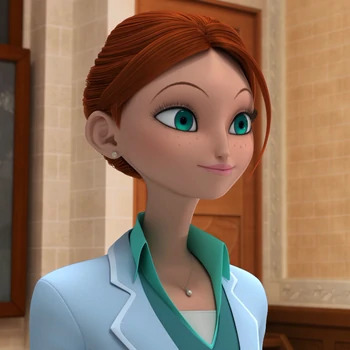
Can we just agree that most of the adults in this show shares the same braincell awhile all the teenagers are smart? Idk, they just easily gullible to lila’s lie and expel Marinette without any proof or something to know she did it.
There’s not just controlled villains, there’s villains just being villains.

Not every villain is going akumantized, in fact, there will be villains who just evil on their own. They pretty much attack the city and stuff like akumanzatied villains do. This is so that it will balance out the akumanzations.
The villains usually comes in a certain time. Like day, afternoon, noon, or night.
Specials are apart of the story, the heroes will learn something, and the heroes will later will come back.

If the heroes going go to different cities, i want them to at least learn something from it.
Unifications would not exist for other kwamis, it will only for 2 kwamis only which its definitely not the ladybug or cat miraculous.
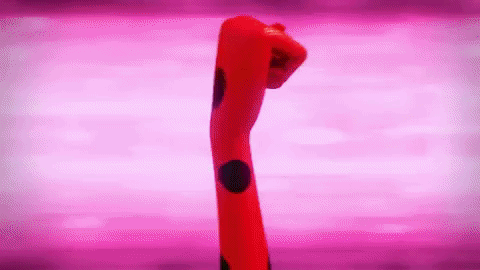
Unifications are op not going lie. There’s no weakness between the powers or weaken the other. The weakness it have is making the user go out of control if consume too many kwamis. I might be wrong though.
So i will only use it for 2 kwamis only (which is not going be said for right now).
Alya not being a hardcore Adrien x Marinette shipper
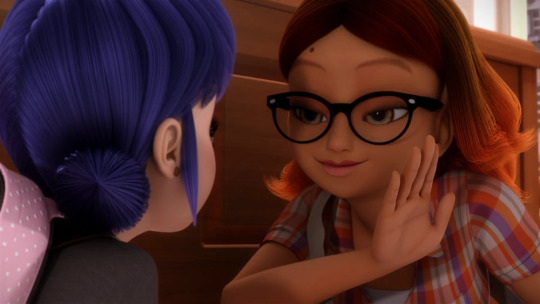
It gets annoying if your bestfriend really wants you and your crush to be together so badly and forces you into uncomfortable spots where your crush is at. Even your friend becomes a hypocrite for a straight minute. I have to erase this so that Alya can be actual friend.
Gay characters that are in relationship actually treated like a relationship instead of a very good best friend thing.
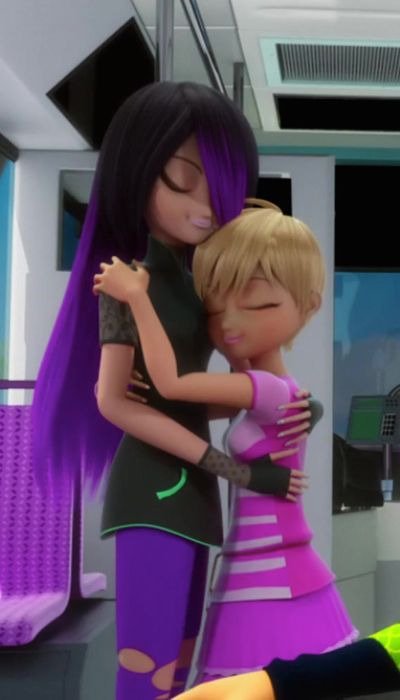
I just want to them actually feel like they in actual relationship.
The guardians mentor their heroes if they have soon experienced enough.
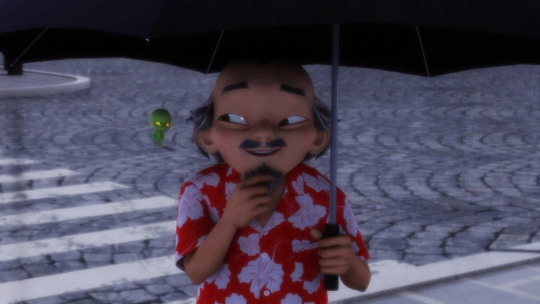
I don’t know, wang fu doesn’t really train anyone or be a good guardian for once. Now he’s gone.
Zoe being an secret agent instead of a hero
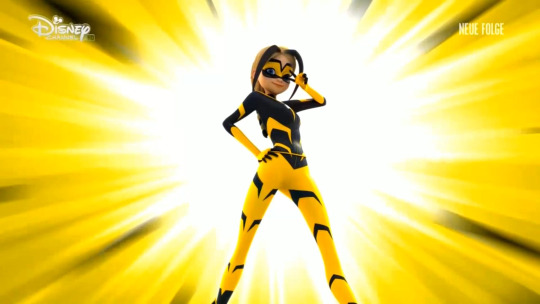
Before you call me a zoe hater, i just want to say this. Zoe entire existence doesn’t make sense. She was never mentioned in the show until season 4. Audrey cheating also doesn’t add up either and causes more plot holes. So i made it where zoe is secret agent from new york who was tasked to go France. She lied about being chloe’s half sister (and other things) just so she get near to her mission. Which leads to another villain soon.
Felix not being a cousin nor evil
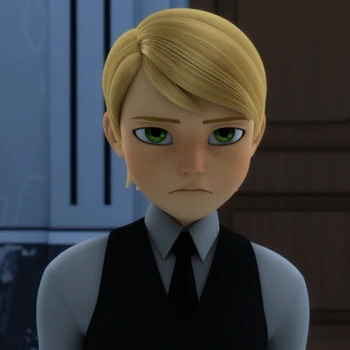
I don’t like how they made felix evil at all. It just feels like insult for the fans who asked him to be in it in the first place. So i made Felix Adrien's brother whose not evil but just gloomy.
Stormy weather being a separate entity
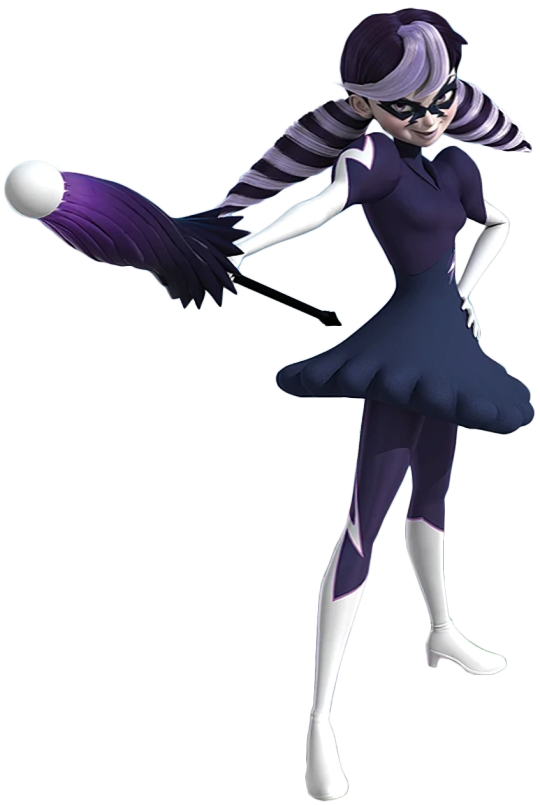
I think it will be cool to see her as a separate villain instead of akumantized one.
Some characters will be either changed or deleted.

Characters will be changed since it is a reboot thing, however some may be deleted because i either don’t like them, can’t find a way how to write them, or they seem pointless character in general.
Viperion is still exist but in a different way
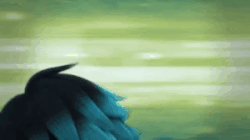
i think its best not to explain this one until later
Superheroes (not miraculous heroes) were created by a mage.

I think is best to not explain this one either until later
Added things
Species

There’s going be more species instead of Superhumans, Kwamis, and Humans. It so that the universe can be expanded.
Dimensions
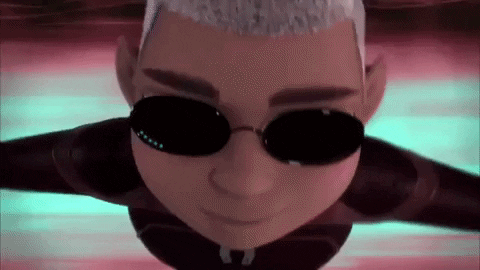
(lol portals)
Dimensions existed for bigger plot points in the story. It also another way to expand the universe some how. The only way to enter dimensions is by portals or keys.
Types of kwamis
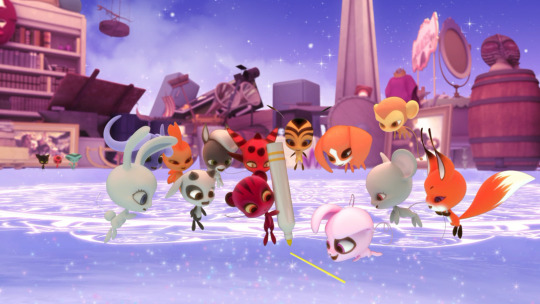
There will be types of kwamis. Like animal kwami, mythical kwami, dark kwami, hoilday kwami and corrupted kwami.
There will also be guardian for each type.
More types of akumanzation/amokzations

As i said eariler, there be more villains with more controlling type powers.
Daroness
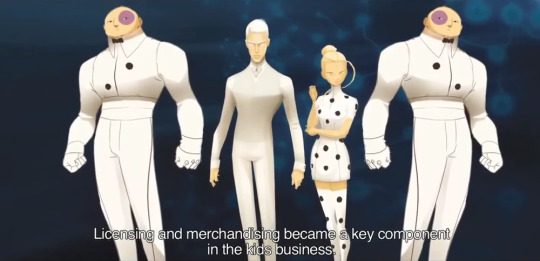
Daroness is faraway villain that is owned by Rodrigue. Hawk moth works there as the chairman, making missions for the villains that works for him. However, he doesn’t akumantize people in this place, he does it in his lair instead. Welp, that’s all for now. Thanks for reading :)

#chloe bourgeois#miraculous ladybug#miraculous au#miraculous adrien#miraculous chat noir#miraculous chloe#miraculous nathalie#miraculoustalesofladybugandcatnoir#nathalie sancoeur#miraculous gabriel#gabriel agreste#adrien agreste#ml adrien#ml ladybug#miraculous sabrina#miraculous zoe#zoe lee#Marinette#miraculous marinette#marinette dupain cheng#ml marinette#chat noir#cat noir#miraculous cat noir#alya cesaire#miraculous fanfic#miraculous hawkmoth#i dont know if this a ml salt but im going to tag it anyway#ml salt#run out of tags
67 notes
·
View notes
Note
hello, I absolutely love your art and I really like ASL ship. I'm also an artist, but I'm afraid to post my art of it becomes i know some people can be rude about ships they don't like. How do you deal with the hate and do you have any advice for someone that wants that kind of confidence to post with out judgement?
Thanks so much for liking my work!
I wish I had a comforting answer for you, but the truth is this: There’s no way to post anything publicly online without judgement. People are always judging, and it’d be alright if they did so silently without being in your face about it, but oftentimes those who take greatest offense are the most vocal (the combination between this and the fact that those who like your work are oftentimes too shy to say anything can have really devastating consequences for self-confidence).
While there have always been people vocal about ships/characters/interpretations/whatever that they don’t like, I’d say that it’s arguably much worse now than it was when I started posting my work on Tumblr, due to both rampant purity culture, and again, fewer people who reblog and give positive comments to validate you and your work.
I wish I could tell you that i’m confident about the work that I post (both in content and artistic execution), but in reality, I’m not. I doubt myself all the time! My self-confidence is always 6 ft under!! I ask myself whether it’s worth posting before every post!! And sometimes, the answer my brain provides is No, it’s not worth posting.
But y’know what? I post anyway ^ ^;;;;;
I guess this is getting off on a bit of a tangent, because you’re asking about ship hate. But for me personally, my fight with my inner voice being mean about myself and my work is so much more vicious than any anti, that idk, the anti seems really mild in comparison? ^ ^;;;; Like oh, you don’t like my ship. Well that’s cute. I have a billion other far more valid criticisms of my work, so come back with a better case and get in line!
(and in continuing to post, and continuing to interact with those who don’t like my work...I guess I’ve gotten sorta used to it? That, and I’m grateful to have followers who ARE kind to me, building that sort of community is important!)
Oh don’t get me wrong, I still get in a sour mood whenever someone sends an unwanted opinion, and it does happen from time to time! But the thing is, there are a lot of tools to block out those opinions and to keep them from reaching you again, and it’s very easy for me to methodically use those, and they work. And the fact that these tools are available helps make hateful opinions seem much more like a tiny angry squirrel squeaking outside my window.
In case you’re wanting to know these steps:
1) If the unwanted comment is in a reply to one of your posts, you can delete the reply so you can’t see it anymore!
2) You can block the user. This prevents them from being able to interact with your posts and send any more unwanted opinions. (I think it’s also based on their IP address, so they can’t harass you on an alternate account either). If you do this to an anon user, they’ll be blocked and you’ll never even know who they were, so can’t even unblock them! Whee!
3) If they’re actually threatening you, you can report them. Rn, tumblr staff’s been pretty good at responding, perhaps due to changed ownership. If they actually threaten to harm you, don’t leave it at blocking, report them! (but also, make sure to only use this option when you are being threatened irl. Reporting is serious, and not a tool to be abused for, “They said something mean and I don’t like them.”)
4) MOST IMPORTANT: Don’t engage with them. I know if they give a shitty opinion, it’s easy to get heated and want to argue. But most likely, they’re hiding it under anon anyway, and you’re doing exactly what they want by getting mad. They don’t care about logic or whether or not their point makes sense. Their only goal is to upset you. So don’t let them win!
The best thing to do, REALLY, is to ignore them. Don’t give them a response by answering their ask, don’t reblog their response if they added it to your post that way. Especially if they’re anon, they have no choice but to keep refreshing your blog in hopes you respond, no way to get notified. Cool, let them keep doing that forever! They’re not worth your time. And they can’t win an argument you don’t accept, so they’ve lost as soon as you’ve rejected them.
(and if you feel like it, before blocking/deleting their shitty messages, take a screenshot, and then share it with your friends in private to laugh at them. It’s quite cathartic ^v^)b)
Another note, but if you’re nervous about posting content about an unpopular ship, it’s okay to ease yourself into it too. You don’t have to draw them naked ‘n snogging right from the get go (and tumblr doesn’t allow n//s//f//w anyway). You may have noticed that a LOT of my works are kinda ambiguously shippy/platonic if you squint and want to read it that way. Part of that’s just bc that’s the sort of content I enjoy creating, with romance being ambiguous, but it’s also less provocative if you want to avoid confrontation with antis ^ ^;
And ANOTHER note, but make sure to tag your ships! It’s a courtesy that’s important to remember on Tumblr and AO3 (and I wish would be adopted on twitter sigh). Tagging is us creators’ way of staying in our lane, and putting up all proper warnings. IF despite the tags, content consumers decide not to blacklist and engage anyway, well, then that’s on them.
So this answer got a bit long and isn’t at all concise, and I apologize for that. But I hope there’s an answer for you buried in here somewhere.
TLDR: There’s always gonna be judgement. Decide for yourself whether you want to post. Not everyone who posts has confidence, you’re not alone. Having positive interactions helps balance out the damage done by negative ones. Be prepared by knowing what tools you’ve got when the negative ones come. If you’re nervous, it’s ok to create more ambiguous content. Tag your posts.
And a final comment: make sure to enjoy creating! Create because you love it first and foremost, and let your creation be an expression of that joy.
❀ ❀ Send YukiPri an Ask! ❀ ❀
#YukiPri replies#Anonymous#longpost#long post#I'm sorry this isn't entirely positive and probably too personal#I want to encourage you to create and post if you want to#but I also want to be honest and say that it's not always fun and to be honest about that#there are ways of dealing with antis and with your own sense of worth#but it's a real uphill battle sometimes sigh
17 notes
·
View notes
Text
6 month: Post 59
DEVELOPMENT BLOG
POST MORTEM
My 6-month, game project is just about coming to and an end and it is bitter sweet. Therefore I'm about to do a game post mortem. This post is going to be a lot longer than normal. This post mortem will follow the 5-5 method e.g. what were the 5 failures and 5 successes of my game development cycle. First of all, let me say that these 6 months have gone in the blink of an eye for me and yet somehow, for the most part, I usually felt in control. The game was created to run on P.C and is a 3D constructivist take on a gravity golf puzzler called ‘Swing’. This platform was chosen because it is an open and free platform to develop for, it has a wide user base and the fact that it is a P.C game means that I didn’t need to manage memory and or project size. Meaning this made the platform suitable for my first solo game. Before we start I do want to talk about a few things that I've learned.
LESSONS
DEVELOPING A GAME BY YOURSELF IS LONELY
Developing a game alone can make you feel isolated and lonely for many reasons. The biggest being that when you have a problem no one is going to solve the problem but you. When you work in a team however, you have the luxury of coming in after a day of banging your head against a problem and someone else has fixed it (This is a rare occurrence). Next, you can miss the comradery of working in a team. Sure, it's great to be able to make a decision at the drop of a hat and not have to justify your position to anyone, but most of the time debate can lead to a better idea then you started with. This is why in my opinion developing a game alone robs a student of learning. When working in a team you learn because you argue and grow your perspective. Working alone did make me learn something, the importance of time management because I had no team I had to stick to a task no matter what. Lastly, if you want to work alone, learn one thing quick "Don’t be afraid to Kill your darling's" this can mean a few things I'm sure but in this context what I mean is sometimes you need to get rid of some of your favourite ideas if they are not working, don’t be precious. Often this is can be because of ideas not being very good but because we see things through rose-tinted glasses we think they are amazing.
IF YOU CAN’T FIX A PROBLEM AFTER A WHILE, JUST CHANGE WHAT YOU ARE DOING AND THEN COME BACK TO IT
I learned over the course of my game development of "Swing" that if you have a problem. Research it, gather information and then take your best crack at the problem. After this has been done a few times when you are exhausted for options and or solutions, rather than ramming your head against a wall for hours, just do another task specifically a short one that can be done quickly. This does two things for the developer one it triggers a feeling of victory in the developer this can alleviate any feelings of stress or depression that the developer may be feeling. Secondly, it can jog the developer's mind. It may sound silly but sometimes when you figure out the answer to one problem your brain just works on figuring out the solution to another problem in the background without you really thinking about it.
DEVELOPING ALONE REALLY HELPS YOU TO FIGURE OUT WHAT SPECIALTY YOU REALLY WANT TO DO
This one is really simple if you decide to develop a game alone you are either going to
A) have one job that you enjoyed much more than you did the others.
B) you may discover that having the lack of a specific job can be really disheartening and remove some of your enjoyment from the development of the game. This can tell you a lot about what you enjoy but also why you enjoy it.
DOING A DEVELOPMENT BLOG IS IMPORTANT BECAUSE IT KEEPS YOU ON TRACK BUT MORE IMPORTANTLY, IT HELPS YOU TO VENT VARIOUS FRUSTRATIONS YOU MAY HAVE ALONG THE WAY
The creation of a development blog and keeping it up to date is more important than you know. At the beginning of the development cycle, a dev blog can seem like a pain and even a waste of time. However, you are wrong, throughout this process I have learned the importance of keeping in line, on track and most importantly accountable. It is so important especially when you're working alone to have a diary that you have to write in every day what you did and why. This technique will be especially effective if you have a mindset of not wanting to disappoint yourself, your superiors or your audience and this will aid you in your quest to making a game. Having a dev blog teaches you how to vent your 'work-place' grievances in a safe environment. If you feel as though someone is bullying you then you have a place you can discuss it and this lets you think. It can also be very helpful to express your technical or design problems to the aether. This is similar in technique to talking to a rubber duck, where you explain your problem to a rubber duck and as you explain it, you figure out the solution. In future, I will try to always keep a dev blog and a physically written production planner simply because it helps me to formulate my thoughts, feelings, ideas and processes at either end of the day when I use my Dev blog or at the beginning of the day I use my production planner.
https://xocdarb.tumblr.com/
FAILURES
1) Planning an assignment six months before you start it is a waste of time.
2) Re-name and organize/ delete things early.
3) Don’t be afraid 'Kill your darlings'
4) Go slow and you will only have to do something once.
5) Don't be afraid to redo something that works.
This is the part of my post mortem that I have to be blunt with myself about my game. The game is 'Fine' and I mean that in both a positive and negative manner. In this paragraph, I will discuss the negative connotations of that statement. When I say this game is fine what I mean is I don't feel it is anything special. I think that it is a fun one-button game that is worth people's time but not their money. This game is in part an art piece it’s a living breathing gallery.
The mechanics of this game are fun but rather simplistic for the simple reason that when I found something that worked I had a tendency to either alter it a small amount or nothing at all. Before I started this project I had planned my assignment down to the wire and then about half a month into the assignment I changed the game and assignments entire focus this proved my prior planning to be a waste of time and resources.
Part way through this assignment I was told by someone that I should delete all of my unnecessary files. I deleted a few over the course of the project and at the end of the assignment, overall though I was so scared of breaking something that I didn't want to delete anything. This makes my game file bigger than it has to be and is more of an irritant than an issue.
The 'Not being afraid to Kill my darlings' issue. I was far too attached to integrating voice recognition into my game for far too long. I should have heard the critique that people were giving me internalized it and then gotten rid of the game's dependency on voice recognition immediately, instead, it took me weeks to come to this milestone. This process did teach me how to cut things that don't work without mercy, which is what I did for the rest of the game's development.
Another big issue for my game was that I rushed things that can't be rushed. For example, the art style that I ended up using for this game was 'Russian Constructivism' this is an art style that requires every angle and colour to be considered. With this in mind at the beginning of my process, I did not do that I just drew something that looked cool and modelled it. I didn't consider how the angles on the inside would affect the bouncing ball. Doing this I made level after level unplayable and worse yet not at all engaging or fun. I did this over and over again until I finally learned, I took my time and I planned the balls angles of bouncing and then after that, I planned the art intentionally around it. This process took longer, every level at the beginning of my project took almost half a week but as I learned I sped up and now it takes a day to make a level.
I would say that my last big failure on this assignment was being afraid to change something that works. This could have many reasons; confidence or skill it doesn’t matter. I am an aspiring junior rigger, I can code and I can model / texture. This being said my coding, modelling and texturing ability is limited. This had an interesting result on my game which is once I made something that worked, regardless of how much time I had to do the task. I didn’t want to re-do the task mainly out of fear that I would break it and not be able to replicate the result. I think this lead to a lot of mechanics, models, and scripts being ‘Fine’. This along with the ever-looming deadline of the end of our project approaching lead to a lot of my work being done up until a point and then having to move on because of time constraints.
Fear was the killer for me on this assignment. I think that my fear of taking risks, or redoing content and even standing behind some of my choices really hurt me on this assignment. With this in mind I know I grew as a person and as a creator over this process but that doesn’t mean I’m not disappointed in some respects. The disappointment doesn’t come from the game it comes from me.
At the beginning of this assignment, I was swinging for the fences, with a 3D narrative based voice recognition game and I examined it and there were massive scoping and technical issues. So I did the wise thing I made something smaller and more fun and while logically I can look at the problem and say I did the right thing. Sometimes I feel playing it safe does leave a bitter taste in my mouth, it’s like admitting to yourself that you don’t think you can achieve the alternative. In thinking about it now I should have also used Git-Kraken from when started. I started using it a month or so into the project and It saved me a lot of time and effort. Originally I was just uploading an individual file to the shared file every day but as the file became larger and larger this became unobtainable. Eventually, I did migrate over to Git-Kraken and get everything set up in the proper manner however once again it was my own fears an uncertainty of self that held me and my project back. I was worried if I didn’t know how the Git Kraken worked or if it broke how to fix the problem, so I choose not to engage with the service. Once I chose to use Git Kraken I learned new skills and could progress at a much more rapid rate.
Twitter: https://twitter.com/xocdarb
SUCCESSES
1) Planning my production schedule.
2) Keeping a considered art style the whole way through.
3) Making my level designs feel at home in the game's world.
4) Listening to/ sorting through appropriate critique.
5) Polishing my game.
Now it’s time to count the ways that I actually succeeded in this assignment. Before we begin I will note that I find it much easier to give negative critique to myself as to me it really feels like I’m gaining knowledge. Whereas when I give positive critique to myself it does feel as though it rings hollow to me. That being said, I think I planned my games development path and then executed on that development plan extremely well. I think that this is one of the single biggest factors as to why my project is in the position it is in during these last few weeks. I would say for future reference that planning out every week’s tasks (including unexpected event weeks) is imperative to an assignments success of any nature.
In the future, I would also use Trello from the beginning as it was instrumental to my success because it gave me a physical reminder to do certain tasks on certain days. In truth, I felt disappointed if a task I was working on could not be completed on time. Next, I felt that I kept a considered art style the whole way through the game, from the ‘Splash Screen’ to the game's menus and then through all of the levels. This was an amazing achievement for me. This required me to dive deep into both the constructionist and suprematism art movements visible in the early 1900’s. I had to learn the art style and then consider what every plain and angle would look and feel like to the player. One of the other big wins for me on this portion of the art was that I think I telegraphed the way that the level should be played/solved well. I used Trello to list my tasks per week in a checklist. Once the week’s tasks have been completed it is dragged into the done folder. This helped me to keep in mind what tasks I needed have done and by when. This method also helped me to keep in mind if I wanted to spend more time on a task what the immediate repercussions would be on the next task.
https://bradcox.itch.io/wobble
Over the course of this assignment, I received a lot of critiques, some of it from leading industry professionals. One of my biggest victories in this assignment I had, is that I finally learned how to control the influence these critiques had over my assignment. To clarify in the past, I have received critique from people and just assumed that their knowledge was superior to my own on the subject and enacted changes without really thinking about the repercussions on the assignment as a whole.
However, in this assignment this wasn’t the case, for example, there was a point that an industry member commented that in my game there should level splash marks on the walls the ball hits and rather wasting weeks trying to replicate the results of an off-handed comment I simply discounted the statement. I took time to internalize the critique and came to the conclusion that the real issue that the person wanted to see remedied was not the lack of paint on the screen but the lack of immediate feedback from the games stimuli. I also think that in this assignment I was more open to critique as a whole because I knew that my process was to listen to what the person was saying and then decide what the true meaning behind the words was. This meant that when I heard something I thought was wrong I was more flexible and accommodating to the critique givers reactions.
The last thing that I would consider a large success in this game assignment for me is how I polished my game. I feel like that this time because I had a clear plan and end goal I was really able to push the quality of my game because of the amount of polish I was able to give it. This gave me time to fix little things meaning I felt relaxed enough that when I did receive further critique on my game I didn’t freak out and or panic that I would not have enough time to fix my issues. Having said that I think one of my biggest successes/ personal growth moments of this project was realising that I label things ‘Good Enough’ and then leaving tasks at that level. This has been a big problem for me in everything from my game design to my Rigging and I do think that now that I have acknowledged this fact I am taking the right next steps to furthering my career and my skill set.
TRENDS
This graph is a measure of the overall engagement of my game over the last month. My return/ replay factor including playtesters sits at about 7 active users. My active users return rate is currently at about 0.67% - 0.14%. This means there is a 0.67% - 0.14% chance that someone on a daily basis is downloading or visiting my games itch.io page. This is a great indicator of how fun my game is. Unfortunately, the trends shown below appear to display spikes in the engagement that happen to coincide with my games significant playtest and or critique opportunities. This graph shows positive expectations for my game upon release.
The graph below represents the number of active players that I have at any one time. The blue line is the number of unique players that I received by the game in the last 30 days, the green line is the total amount of active users I have per day and finally, the purple line is the number of first-time users for my game. This constraint (Even if it is ever so slow) trend of increase in the blue line makes me feel confident that my required audience is being engaged correctly.
https://bradcox.itch.io/wobble
CONCLUSIONS
MOVING FORWARD
Moving forward is always a difficult part because a lot of the time you learn an important lesson and then you forget it for the first few weeks of your next assignment then before repeating to many of those same mistakes your brain starts working and you remember all of the solutions you learned previously. This often happens to me before any significant time is wasted. That being said, the lessons that I learned here in this assignment are varied. Some of these lessons are personal and have taught me that next time ‘fine’ isn’t good enough. Whether it is a rig, or polishing a game or a model, it is important to note that in future I need to walk away from any project knowing that I really refined my work until it is a cut above.
I think the other big thing I would do next time is to not be so scared of failure. As I’ve said there were times in this assignment where I was worried about breaking something so much that I didn’t want to redo or take time to streamline my processes.
At the time of writing this I believe that I am on the right path to fixing this issue as I solved one of my biggest issues, an error that says ‘Particle texture type read and write needs to be enabled’ by making sure I had a back-up of my project (Keeping me in a measured state of mind) and then going through a copy and deleting each group until I found the group causing the issue. Then I took the items from that group and deleted them one by one until I found the item that was causing the issue. After I found the item I kept drilling until I found the issue component. I think that this shows a mindset shift about the importance of doing whatever you have to, to solve the issue even if that means to rebuild something. I hope this change in mindset is the start of my growth beyond being a junior in my field.
RELEVANT LINKS
Blogs:
https://xocdarb.tumblr.com/
Socials:
Twitter: https://twitter.com/xocdarb
Instagram: https://www.instagram.com/xocdarb/
Games:
https://bradcox.itch.io/wobble
1 note
·
View note
Text
Toronto Fringe Festival Accessibility and Disability Art Round-up
Now that another year of Fringe has come and gone, I decided to write a post on my experiences at Fringe, both as a reviewer for NOW Magazine, and when we set ourselves loose on Fringe to explore for ourselves. It’s been a wild ride, impossible to sum up in one article, but I’m going to give it my best shot.
The Extraordinary
The Front of House manager at Theatre Passe Muraille (TPM) gets major props for providing us (my partner who also is a manual chair user and I) the best access experience that we had in our entire Fringe experience. We were at the theatre twice in one day, and for those of you who don’t use manual wheelchairs, the entrance way to TPM is not accessible at all. The incline is too steep to be able to self-propel up it, and the doors too heavy to manage opening by yourself even if you are somehow able to have super human strength and get up there. It’s a doable venue, but I won’t do it unless we’ve made arrangements to have someone outside assist us with getting in. The front of house manager was incredible about assisting us into the venue, by which I mean she didn’t just agree to help, but also checked in with where on the chair she should touch and push, and asked for consent before she touched us. On our second entry into the building later, a volunteer came up behind me and just started pushing, and she found us a few minutes later in the lobby, and apologized that the volunteer hadn’t asked before he did it. She said that she had spoken to him and that he now knew that that was something that he shouldn’t do. Given the number of screaming fights I’ve had with the general public about not touching me without my consent, this was a refreshing and amazing change of pace!
Also making the extraordinary list was Generally Hospital. It was amazing. The team of Ophira Calof, Grace Smith, Alla Rasul, Devan Islas and Sabrina Friedman under the direction of Leigh Cameron make a tight finely tuned comedy machine. Exploring themes that are incredibly relevant to disabled and chronically ill people’s lives such as how to have sex in a wheelchair, and love not being the only thing in the air in the colonoscopy recovery room, they had me in stitches the entire time. My favourite scene was when Rasul, having made a typical able-bodied comment about being a wheelchair user, gets stared down by Calof as she raises her chair to its full height, sticks her fingers out in an “I’m watching you” gesture and silently turns and wheels away, fingers following Rasul. Having spent significant amounts of time in the hospital myself over the years, it makes me wish that next time I need to be in the hospital, I could check myself into Arbitrary General, provided it isn’t during the purge.
The Great
Leading off the great list, is Awkward Hug. I knew it was a story that touched on disability, but I was on guard a bit going in because Cory Thibert is not disabled himself, and was instead speaking about his parents experience of disability and how it impacted him. Caregiver stories about disabled people can often be problematic, and speak about disabled people in ways they haven’t consented to, or share a side of the disabled person that they don’t want to be shared. I was really happy about the way that Cory told his story. It was genuine and real, and gave me so much to relate to as a disabled person in the audience. One of the main themes in the play is how Cory’s father, full of anxiety about missing paratransit, and all the ways that can and has left him stranded, leaves all of Cory’s performances just before the final scene. Being a paratransit user, this resonated, and having personally experienced the terrors of an Ottawa winter as a wheelchair user (2 pairs of socks and a protective blanket under good quality boots isn’t enough to keep you from losing feeling in your toes) I can appreciate the particular chord of fear this experience strikes. The emotions are genuine, complex, and nuanced, even as Thibert self-professes his difficulty with expressing his feelings and communication. The only weakness of the work is that sometimes the story loses focus and takes us on unnecessary side trips. I’m not quite sure how the multiple pet stories connected to the core of the story, which is Thibert’s awakening to his parent’s disabilities, and how that influences the relationship that he is able to have with them. Otherwise, this is a fantastic piece from a creator who I look forward to seeing more from.
Also on the great list was the #UrgentExchange with Generator. I got to facilitate a conversation on criticism in disability art, and I had a blast. We didn’t get to any concrete answers, but managed to cover some of the core tensions between the disability community and the theatre criticism community. Some of the key points that came out of our conversation included tensions between wanting to have disability art recognized as part of the mainstream arts scene, which includes opening the door to criticism, but recognizing that mainstream media and disabled people have had a difficult relationship which continues to this day. This leaves many disabled artists distrustful of the media. Another tension is that if critics don’t have adequate language or knowledge of the disability community, are they qualified to comment upon or judge that work? If they aren’t, or they don’t, who is responsible for providing that education? Is it up to the critic, should it be up to the production itself, or the PR company (if one is engaged)? Does the arts sector have the capacity to support this kind of education? Where are the institutions that might provide it? Who do we want even reviewing disability art? Should we even invite able-bodied critics to review disability art pieces? I don’t know if I have any of the answers, but I’m really happy to be asking the questions and having the conversations.
The last item making my great list was Birds Make Me Think About Freedom. I reviewed it for NOW Magazine, so you can check out my writing on it there.
The Bad
There were numerous instances of sketchy accessibility throughout Fringe. George Ignatieff Theatre, I’m looking at you. It wasn’t that it was impossible, it is that it was poorly marked, and if you didn’t know the accessible way into that theatre already, there was a lot of extra uphill walking/rolling required. On my second day there, I had to cover about 50 m on grass because they were doing construction on the building and the truck had blocked the accessible entrance. Not cool U of T. Not cool. Also not so great was signage posted around some of the site specific venues that wasn’t placed in ways that a wheelchair user could access it.
Also, coming in on the bad list was Aspergers: More Tales of a Social Misfit. I also wrote about it for NOW but I want to say a bit more about it as I’ve had some more time to reflect on it. I really wanted to like the show. I came into Fringe being incredibly excited about it and eager to see it. When I left, I felt disappointed, mostly because it felt like to me rather than turning the joke around on neurotypical people, it gave people an excuse to laugh at autistic people. I think Aaron is a smart and capable comedian, and I was hard on him because I think his work has the potential to become this. I think that the disabled community, and able-bodied people too, are ready for work that diverges from old tropes and comedic standbys and gets real with people about the realities of ableism. So, despite the bad review, I hope Aaron continues to work towards this, and I would go see his work again.
The Ugly
Thankfully, there are only two entries to the ugly category. First up, is The Randolph and Annex theatres. Both venues were marked as accessible by Fringe Toronto, and neither of them were. The Randolph scores slightly worse than the Annex as it is completely unsafe for a variety of mobility devices including manual chairs, power chairs or scooters. The ramp to the door was designed for trolleys and not people, and it was not wide enough to accommodate disabled people safely. The ramp to the bathroom also is not doable or safe either. The Annex would be much better if they could address the gravel parking lot a disabled person (but notably not an able-bodied person) must cross to access the ramp. The good thing that came out of this situation however was a really good conversation with the Fringe team, and a plan going forward to make sure that venues used are accessible, and deemed as such by actual disabled people, with detailed information available to the public in advance, moving forward into future years.
The last ugly thing was receiving hate mail for a review. It comes with the territory, so I’m not too shaken about it other than feeling like “woo, now I’m a new critic”, but it sucks when you’re being accused of doing the thing that you’ve stood against publicly again and again. Ultimately, give people a computer and anonymity to hide behind and people will say whatever they feel entitled to though.
So there you have it. With a final evening of Fringe ahead for those of us who don’t have rehearsal tonight, get on out there and Fringe it up!
5 notes
·
View notes
Photo
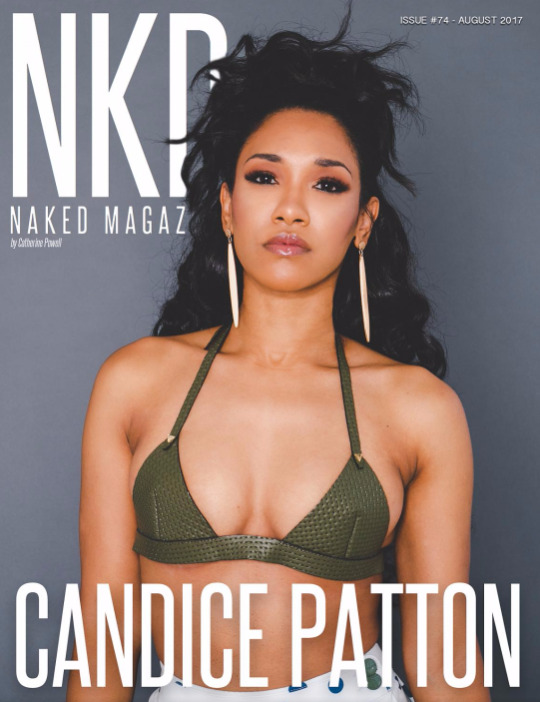

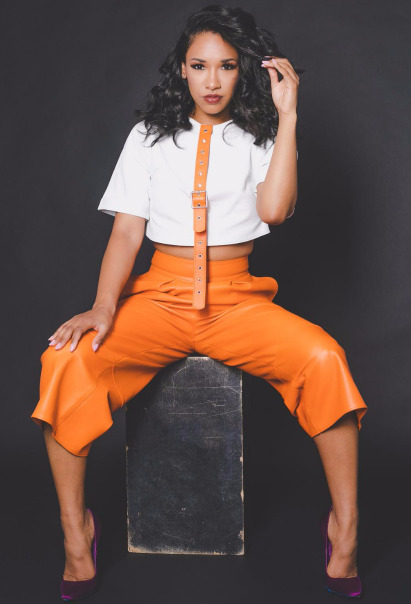

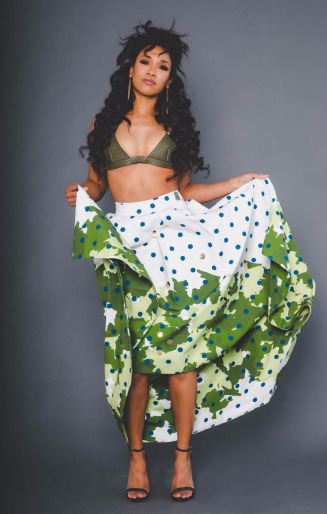

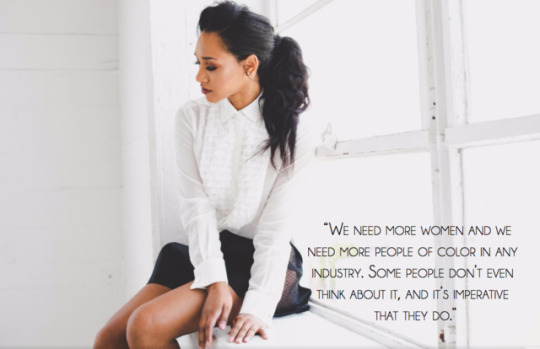
On the Coastal Tip of Jamaica, actress Candice Patton stands barefoot in a sheer yellow dress before settling turquoise waters. Her arms sway back and forth as the Caribbean air billows through the thigh-high slit. She gives the camera a small smile as the sun radiates off her skin and the tide tiptoes towards the shore. The Instagram boomerang I’m glancing at has now been viewed over 200,000 times by her 1.2 million-user following.
It’s mid-June; a median between two milestones in Candice’s life - two weeks before her 29th birthday, and two weeks after the Season 3 finale of The Flash aired in homes nationwide. The superhero fiction show, based on the DC Comics character of the same name, stars Candice as Iris West, opposite Grant Gustin as the titular hero, Barry Allen. In the last three years, The Flash has garnered over 15 awards, with Candice herself most recently winning a Saturn Award for “Best Supporting Actress on Television”. It makes sense that CBS Watch! Magazine would send her over to the Caribbean for a photoshoot.
The CW star calls me from her residence in Los Angeles on a Friday afternoon, after her trip in Jamaica. I expect her to sound exhausted from her jet setting, but she’s not. To my astoundment, there’s a lot on her mind. I come to realize that, unlike Iris West, Candice Patton is equipped with a power of her own.
The Mississippi-born and Texas-bred thespian participated in school productions and out of school drama programs throughout her entire life. In high school, Candice was a cheerleader until she tore her anterior cruciate ligament during her senior year. The injury kept her benched for the remainder of the season, but allowed her to focus on acting. She ended up pursuing theatre at Southern Methodist University in Dallas the following year.
“Acting was always something that empowered me and gave me joy,” she says. When I was younger, I never really thought about acting professionally, but it gave me a huge outlet for my own personal struggles.” After graduating with a BFA in Theatre from SMU in 2007, Candice moved to Los Angeles, where she has lived ever since. “There’s something about being young enough and innocent enough to think that anything is possible,” she says. “I don’t think I would have made the move if I was older.” As it turns out, making that move would be the first step in her journey towards her television debut.
In Los Angeles, Candice felt she was sucked into an atmosphere bathed in superficiality. To her, home was only a four-hour flight away, but felt much, much further. Immersed in a culture she had never experienced before, she didn’t feel like a perfect fit. “You’re eating new foods and everything’s so healthy and people are obsessed with the way they look,” Candice says. “It was hard for me to feel like I had a place in L.A. or that I was cool enough to think I could even be an actress and contend with all these other people.” In the midst of the culture shock and the absence of southern hospitality, Candice motivated herself to audition for anything and everything. And in doing so, she understood just how unsympathetic the entertainment industry was. “I was getting rejected day in and day out,” she continues. She pauses briefly then says, “I really don’t know how I survived.”
Between her adjusting lifestyle, ongoing rejection, and daunting insecurities, the pressure to cultivate her own niche began to rise. Candice was in the right rooms with the wrong people - managers, friends, and industry outsiders who all had hot takes on how success was achieved in that city. “I was told I had to be a certain weight, or to look more like some other girl,” she recalls. “I felt the pressure of that then and I still feel the pressure of that now.” Despite the unsolicited advice from her peers, Candice continued to do what she knew best - working hard, working well, and committing to her craft. “I had to keep putting one foot in front of the other until something turned around,” she says. “I’m glad I stuck with it as long as I did.” By 2012, Candice’s acting repertoire included appearances on Entourage, Heroes, CSI: Miami, Grey’s Anatomy, Rizzoli & Isles, and The Game. And then came 2013.
In the weeks before pilot season that year, Candice received an email from her manager. Arrow co-creators Greg Berlanti and Andrew Kreisberg were casting for their newest DC Comics series, The Flash. Grant Gustin, who appeared twice on the hooded-vigilante series as Barry Allen, reprised his lead role. The planned backdoor pilot was cancelled in favor of a traditional higher-budgeted pilot by networks executives who were impressed by early screenings of Grant’s appearances on Arrow. The e-mail from her manager read, ‘This is your role. It’s perfect for you.’
The Flash follows the chronicles of socially awkward CSI Barry Allen and the aftermath of his mother’s supernatural murder. Candice auditioned for the role of journalist Iris West, the daughter of Detective Joe West, and Barry’s childhood best friend. “I was thrilled to be going in for a lead female role that isn’t traditionally played by an African-American,” Candice says. “And deep down, I always wanted to be part of some superhero show or film.”
In Season 3 of The Flash, Barry runs back to his childhood home to prevent his mother’s murder. After saving Nora Allen from the Reverse Flash, he creates an alternate reality called Flashpoint. The famous comic crossover story arc details an altered universe in which Barry Allen is the only person aware of the differences between the original timeline and the altered one. This heart-wrenching season of was pieced around Iris’ forecasted murder and Team Flash’s attempt to stop it. It’s clear her character’s resilience is an important sticking point. “Iris is visibly fearless, even when she’s vulnerable. Strong women are capable of experiencing fear, but then choose to find the strength to move forward. That’s what Iris does,” Candice says.
She’s loyal to Barry, to Wally, to her dad, and Team Flash,” Candice continues, noting that Iris spends most of her time at S.T.A.R. Labs than she does at her actual job. “She doesn’t have powers but that doesn’t get in the way of her trying to contribute. I think she’s a character that both men and women can admire.”
The Season 3 finale of The Flash premiered on May 23, 2017, the coincidental date of Iris West’s prophesied death. Fans witnessed the loss, the betrayal, and the fate worse than death - tragedies foretold by the season’s big bad, Savitar, in previous episodes. Above all else, they watched the long-awaited development of West-Allen, the ongoing fan-favorite nickname for Barry and Iris. “This season was filled with so much emotional turmoil,” Candice says, laughing on the other end of the line. “And right when you think they’re back on track and can finally plan their wedding, they can’t.”
In the season’s final moments, The Flash made some poignant, if not complete strides. After conquering the darkness that monopolized Barry’s entire year and the anticipated unveiling of Savitar, “Finish Line” propels the series into potential plot twists and upcoming comic book villains. Regrettably, like most season finales, it’s cut too short. The Speed Force wreaks havoc above Central City, demanding a new speedster to take the place of the beloved Jay Garrick. Barry accepts his imprisonment for creating Flashpoint, leaving Iris, Joe, Wally, and all of Team Flash behind. “It’s The Flash,” Candice laughs. “You never know what you’re going to get. There’ll be more drama.” The conflict is expected, regardless of who ends up in that revered red suit.
Among other running shows on the network, The Flash is notable for their racially diverse cast. The core ensemble is comprised of Caucasians, African-Americans, and Latinos alike, with other minorities starring as citizens or city villains. “The diversity in The Flash is indicative of the world that we live in,” Candice says. “The more we see it on television, the more we resonate with it because it looks like our real life.”
In a 2016 comprehensive report published by USC Annenberg on the Diversity in Entertainment, The CW ranked second in the Television and Digital Distributor Inclusion Index. They were titled “Largely Exclusive” if not “Fully Exclusive” in their high percentage of female character inclusion, as well as female creators and writers. On cable television alone, over 51% of 138 shows lack Asian-speaking roles with 23% lacking African-American speaking roles. As an African-American woman herself, Candice beams with pride when I mention her network’s forefront position of this landscape. “We need more women and we need more people of color in any industry,” she says. “Some people don’t even think about it, and it’s imperative that they do.”
In 2016, Huffington Post surveyed U.S. adults and found only one in five white people believed Hollywood does not provide adequate roles to minorities. Over 60% of white people were pleased by the number of films featuring racial minorities. Black Americans, however, disagreed. 87% believed the entertainment industry does not provide enough opportunities to racial minorities. Candice is one of them. “Diversity is so imperative and I don’t think people quite understand how it changes the way people view themselves,” she says. “If you go to the movies and you see the President of the United States is Asian, you then believe that it is possible.”
After a recent phone call with producers of The Flash, Candice knows a few things about the upcoming season, mainly plot points for her character. “Other than that, I don’t know too much and I don’t want to know too much,” she says. They began filming Season 4 in Vancouver on July 3. “Think of me when you’re watching fireworks and grilling burgers,” she says to me. When filming 10 months out of the year in Canada, the cast tends to miss major holidays - Independence Day, for one. In the other two hiatus months, Candice flies back and forth between Los Angeles and Texas where her parents, brother and baby niece and nephew reside. “I love my job and I’m humbled to do this for a living, but it’s hard being away from friends and family for so long,” she says. “I really cherish the two months I have off with them.” In time, Candice hopes to write and produce her own material, as well as shifting her focus into film - two things that need to be put on hold or shot in between filming The Flash. “There’s a part of me that really wants to have a film career and do gritty, independent features,” she says. “As a woman in this business, I would love to dabble in directing. That would be challenging but fulfilling for me.”
The actress’ passion for diversity is evident in all she does. It’s only one of many reasons why her work in the industry is nowhere near finished, especially with other women of color combatting that same crusade. Candice is on the cutting edge of reshaping the diversity issue in Hollywood, as her idols Lena Hornes and Halle Berry did before. “They cracked the door open for me and I’m trying to keep it open for the young girls who are watching me on The Flash right now,” she says. “Future women of color will come after me and audition for a lead role opposite a white guy, too. Helping those behind you is where true success comes from.”
Two weeks after our phone call, I check Candice’s Instagram. Her most recent post is a video, likely captured by a friend. She’s half asleep on a bed, surrounded by her castmates and closest cohorts singing “Happy Birthday” to her. She briefly turns her head to face them, but almost immediately retreats back into her pillow. The caption reads, ‘When it’s ya birthday but nap is life.’ I laugh to myself before recalling something Candice said to me two weeks ago. “If I never act again, I want people to say I opened doors and broke down boundaries in this industry,” she says. “I know I’ll have succeeded then.” That nap is well deserved, Candice. You’ve got some business to take care of.
2K notes
·
View notes
Text
GDC 2018: The 5 biggest game industry trends for 2018

The Game Developers Conference runs from March 19 to March 23 and lays out the industry’s plans for the year.
It might lack the headline-grabbing software bonanza of a consumer-oriented event like E3, but when it comes to the business of games, the Game Developers Conference (GDC) is the most important show of the year.
Now in its 29th year, GDC drills down into the beating heart of video games by appealing to perhaps the most important gamers of all: the ones who make them. GDC 2018, which runs from March 19 through March 23 at San Francisco’s Moscone Center, is part expo, part summit and part job-fair. It’s where the future of the games industry is discussed — and often formed.
Here are four of the biggest game industry trends emerging from GDC 2018:
1. AR is the new VR
Despite tons of investor interest and loads of hype from critics, virtual reality has had a tough time getting off the ground. The current headsets remain expensive and unwieldy, and though tech pundits believe that they’ll shrink enough in both size and price in the next few years to become a major technological force, it’s taking longer than many expected.
“VR is still important – we see interest in it – though it’s true that the VR hardware has not become as popular as some people hoped, which often happens early in the lifecycles of technologies,” said Simon Carless, EVP of GDC parent company UMB. “I think we’re seeing now a bit of a retrenchment.”
In the meantime, augmented reality has not only delivered a massive hit in “Pokemon Go,” but remains more attractive for developers thanks to its lower cost of entry.

Niantic is making it easier to log into Pokemon Go, perhaps in an effort to
“I think people are looking forward to AR in particular,” Carless said. “Given that in the longer term we may not use phones – we may actually be using glasses with phone-like information on them – I think that enables AR to be an exciting possibility. A lot of the technology that games is pioneering will be needed to make that AR work. The space is exciting and there’s cool stuff going on there.”
Noteworthy tech companies certainly agree. Just before the show, Google (GOOG, GOOGL) released its Google Maps API to the world through the Unity game engine, making it much easier for developers to craft games using real-world locations. AR games based on Harry Potter, Jurassic Park, Ghostbusters and The Walking Dead are already in the works. And Tim Sweeney, CEO of game developer and Unreal engine creator Epic Games, believes AR glasses could replace smartphones within 10 years.
2. Games as service
At the end of 2017, you couldn’t scroll two lines into a gaming forum without being bludgeoned by the words “loot crates” and “the death of single-player games.”
Ultimately, both issues (which we won’t litigate here) boil down to the success of “games as service” – games that operate on a continuing revenue model through subscriptions or post-release updates that keep players coming back (and spending money). Some of the industry’s biggest games function this way, from Blizzard’s (ATVI) hit shooter “Overwatch” to Supercell’s mobile mainstay “Clash Royale.”

Loot boxes in games like “Overwatch” have become a flashpoint in the industry, but help finance titles long after the’ve been published. (image: Digital Trends)
“There are so many games that have been released three or four years ago that have greatly improved themselves because they’re being run as a service,” Carless said. “How do you compete if you’re new off the block with some of these games that have been around for a long time?”
That’s a good question, and one that countless game companies will spend the year trying to answer. Getting it right — creating a game embraced by players that also works as a long-term revenue generator — is no easy task.
3. Getting discovered
Even harder? Just getting noticed in the first place.
Between the consoles, PC and mobile devices, tons of new video games are released every week. As more and more players opt to buy those games digitally rather than make the trek to retail stores, the old models of how a game gets discovered are breaking down.
“Beyond your ‘Grand Theft Autos’ or your ‘Assassin’s Creeds,’ everyone is competing on the same playing field nowadays,” Carless said. “Even if you’re an established company with 50 or 100 people, you may have to compete with the really scrappy three-person development team who have done a really good job of building their game. There are more and more amazing looking games being released, but it’s really difficult to find them.”

‘Fortnite Battle Royale’ saw its popularity explode this year after a slow start in 2017.
That means figuring out new ways to get a game noticed. Building buzz in a sea of software requires planning beyond a commercial or two. Social outreach, press coverage, changing the revenue model — there’s no one right answer.
Just ask Epic Games, creators of the pop-culture juggernaut “Fortnite.“ Originally released in July of last year, “Fornite” was met with middling reviews and slow sales until the developers added a new free-to-play “Battle Royale” mode in September 2017. Within a few months, “Fortnite” has become the biggest game in the world (over 45 million players, 3.4 million peak concurrent users back in January). Rapper Drake and streamer Ninja recently played live on Twitch, which is owned by Amazon (AMZN), breaking viewership records. No one saw it coming, its developers included.
Plenty of GDC panels about PR and marketing hope to give clues about achieving this sort of success, though expect companies to spend the bulk of 2018 actively searching for ways to cut through the noise.
4. Fighting toxicity
All too often, players fire up an online game, sit through matchmaking and emerge in a virtual world only to find themselves the target of obscenities that would make George Carlin blush. Online gaming drama can quickly take a turn for the worse, such as when a swatting prank resulted in the death of a Kansas man at the tail end of 2017.
No matter the form, bad behavior is bad for business. In turn, game companies will be spending a great deal of time in 2018 trying to clean up their communities.
GDC helps kick that movement off by introducing a new organization called The Fair Play Alliance. Its goal is to take the fight to the trolls by sharing best practices to encourage healthier player relationships. Over 30 of the world’s biggest game companies are on board, including Blizzard, Epic, Riot, Rovio, Supercell and Twitch.
Other notable trends covered at GDC 2018 include the continuing rise of esports, representation and diversity, game engine wars and the potential use of cryptocurrency in gaming.
More games news:
‘God of War’ could be 2018’s first must-have game
‘Kirby Star Allies’ review: How to make friends and eat them
Despite Trump’s meeting, video games and violence still don’t add up
‘Far Cry 5’ preview: Exploring cults and terror in the American West
The 10 best iPhone and Android games of the month
Follow Ben Silverman on Twitter at @Ben_Silverman.
#tech#gaming#Twitch#_revsp:yahoofinance.com#_author:Ben Silverman#_uuid:3cea4300-8331-3989-96f0-bc9931abd69d#Augmented reality#loot boxes#$ATVI#AR#Fortnite#_lmsid:a077000000BAh3wAAD#$GOOGL#Virtual reality#microtransactions#games#$GOOG#VR#$AMZN#video games
2 notes
·
View notes
Text
Why UX, UI, CX, IA, IxD, and Other Sorts of Design Are Dumb
How to stop setting up definitions for overkill terminology and start doing the job. An opinion.
What do you do? What title do you put on the resume and portfolio? Why these words? I invite you to an exploration of how design titles and directions are (not) connected with the real world. So, let’s take a look at the current state of things. I guess you’ve seen different attempts to distinguish between UX and UI, UX and CX, user experience and product design, and so on. And you might have seen schemes about designer types like UI and UX designer, UX and IxD designer, etc. They are adorable. Diagrams showing what is what have got extremely sophisticated over time.

This is a vivid reflection of the phenomenon I’d like us to chew on. If you’ve ever googled such stuff, you’ve probably noticed they give few answers and don’t tell much about us — designers.
Something significant is always missing in all these differentiations. Where is… value? Money? Social or business goal? If any measurable value is not taken into account, such diagrams can only serve a topic for designers’ snobbish chatter at 10 AM near the coffee machine. For the majority of people — people who do not live in the world of pixels, fonts, and canvases — it’s nonsense. And it surely seems twaddle to our clients.

I remember time when I tried to “enlighten” clients and rolled my eyes at them when they confused design terminology. Now I know for sure who created so-called clients from hell — designers from hell. Such as me years ago. We are in the trapping pit we’ve dug. Difference between UX, CX, UI, IxD, etc. doesn’t ring non-designers a bell. And it doesn’t have to because the difference is theoretical.

I have a hypothesis that the modern outbreak of creative design types and titles is a kind of resistance to stereotypes. Maybe we are adding descriptive words and replacing “designer” with “strategist”, “architect”, “analyst”, and “developer” to run away from “make it look sexy”. The latest trend is to call yourself a product designer or a product manager (whatever it means). Product has become the new UX these days. Isn’t it a vicious circle? People, whose titles “entrepreneur” and “CEO” are existing for decades, laugh at our constantly changing job naming.

There is no matter what you call yourself and your approach if the result of work lacks tangible value. If a designer draws wireframes, prepares prototypes, conducts workshops, but cannot deliver a design solution for a problem, he or she is anything but a designer.
Clients care about what you do only when you care about their business.
So, what are designers supposed to do? Where is the balance between focusing on a narrow area or being in charge of all design activities? Where is the verge between drawing mockups and influencing the world behind the window? There is a popular idea that the T-shaped skillset is the best for a designer. It means a designer has deep competence some area and decent knowledge in the rest of design areas.

However, we are living in a weird age. There is a bunch of dick-shaped designers proud of knowing one narrow area and a trifle of neighboring ones. Such skills don’t allow to think strategically and keep the final value in mind.

I often hear, “Oh fuff, I don’t draw icons. I’m a UX designer. I pass my wireframes to a UI guy”. Or, “I pick the color palette. You’d better ask about the business model that girl at the whiteboard”. What’s next? There will be Blue Button Designers? (Do not confuse with Red Button Designers.) Flat Icon Architects? Customer Journey Map Strategists? Principal Sticky Note Peelers? Helvetica Poster Developers? To feel how grotesque it sounds try transforming some non-design job titles. Steel Hammer Carpenter, Motor Yacht Sailor, Asian Flavor Cook, Beretta Gun Soldier…
“UX/UI designer” sounds as awkward as “vegetable/carrot salad” or “vehicle/bus driver”.
And since design thinking is a hype nowadays, there is another problem. I call it em-dash-shaped designers. They attend dozens of design conferences and courses, try themselves a little bit in different directions but can not produce anything valuable and complex. Those guys like mentioning all the areas they pretend to know. For instance, UI/UX/Web/Mobile/Desktop Designer, Service/Digital/Product Designer/Manager.

You may disagree, “It sounds cool in theory. But these buzzword titles are exactly what HRs and recruiters are looking for”. Well, this is right to a certain extent. And there is a point where professional dignity goes in. If it becomes trendy to call our job “Pixel Mover” or “Photoshop Operator”, will we put it on resumes? Of course, we are not there yet, but we are moving towards when conforming to trends.
I think large companies have contributed to unteaching designers to be… designers. This zoo of designer and design types is the result of granular work distribution in big teams. Designers are doing their small parts and gradually unlearn to test them against the final goal. Throw stones at me, but the end-to-end design process is a must for any designer, although they can specialize in something. From a bird’s eye view, there is a universal design workflow.
Methods vary for every industry but the core is the same: research, ideation, validation, implementation.
If we call ourselves designers, I believe we should take responsibility for the whole product fate even doing a small portion of work at a time. If icons, wireframes, mockups, icons or prototypes are neat, but what users see is a disaster, designers haven’t done their work. Let me make myself clear. I don’t promote being a design generalist versus a design specialist. Just pointing out a professional misbalance and ambiguity we have nowadays. It seems design has the most unstable borders among all the jobs.
Now we can return to the questions I asked at the beginning. What are we? Why these words? And here is another interesting observation. Designers used to call themselves after what they did. Present-day titles more and more reflect how we work because there is not much difference between designing a mobile interface and a microwave oven. “If you can design a thing, you can design anything”, said Massimo Vignelli. Methodology is what matters a lot. What are the steps that guide us to good solutions? How can we measure their benefits? Businesswise, what helps to make more money?

We should be able to show the measurable value of what we consider is right. Sometimes designers propose solutions that don’t bring income immediately but attract loyal customers. Loyalty and reputation will bring money in the future. The task is to show how it’ll be possible. It’s like playing chess. The more steps ahead you think, the more credibility and trust you gain.
The value of design is one of the basic topics in our profession, and more and more I feel lack of it. Photoshop, Sketch, pixel perfection, customer journey maps, visual language don’t make us designers. The same way a hammer and a saw don’t make someone a carpenter. We are designers when we solve problems and contribute to something valuable.

There will always be people and situations that break the reputation of our profession. A popular meme says there will always be someone who can do it cheaper and worse. Fortunately, there are simple things we can do to support the positive image of designers.
1. Call your job clearly and concisely
After the decades of evolution, only the word “designer” has left unchanged. If you put any words before “designer” check whether they can stay relevant in ten years or so. And beware of referring to one particular tool or method because this makes you look limited. In all times serious, mature clients weren’t searching for wireframe-artists and button-creators. They need market-conquerors, problem-solvers, and money-multipliers. If you are one of them, you are at the helm of changes. Specializing in something is good until it becomes an obstacle for understanding the whole business. I personally like calling myself just a designer. The fact that I design interfaces (not interiors or clothes) becomes clear from the industry of the company I work for.
2. Showcase not work, but the value added
It might turn out that many works are lacking tangible value. Oh, I know that from my own experience. Instead of “Designed look and feel for a financial app” try “2x speed-up of the sign-up to a financial app”. For the project “Design of a logistics VR concept” consider “VR concept that estimatedly can save up to 40% of the delivery cost”. Value can be both financial — earning or saving money — and social — making one’s life better. “I’ve done” is stronger and more result-oriented than “I did”.
3. Collect and create the proofs of design impact
Clients will always be challenging our designs and questioning our proposals. And the bigger a project is, the more businesses risk when rely on unproven designs. So we should learn from the evidence of design impact on business and people and generate such evidence. One of the recent cases is Forrester’s study on how design thinking techniques have affected the economic performance of IBM.
On the other hand, there are widely-spread myths about the value of design. It’s really hard to extract design from all the activities and say something like, “A week of designer’s work brings $10k income to our business.” One of popular fake facts states, “$1 invested in design brings $100 of income”. This idea is absent in the book it usually is associated with. The more we refer to such unproven factoids, the more come across as “artists”. It’s designers’ responsibility to replace myths with research data.
Recommended materials
Much more experienced and knowledgeable designers inspired me to write this humble article. By getting acquainted with their opinion too, you’ll have a broader picture of what’s happening in the design world.
Mike Monteiro, “You Have Been Lied to”, a video recording of the keynote at Interaction-2015 conference. One of Mike’s thoughts is that everything that helps designers to do their job is the part of their job.
Mike Monteiro, “Design’s Lost Generation”, an article on designers’ professional ethics and making a choice between earning a living and doing what is right.
Alan Cooper, “When Companies Question the Value of Design”, an article about the reasons designers can not communicate the value of their work in terms of money. (Paid reading but it’s worth it.)
Instead of post scriptum — a recent tweet by “Father of Visual Basic”.

Feel free to get in touch elsewhere: Dribbble, Behance, SlideShare, Instagram.
The post Why UX, UI, CX, IA, IxD, and Other Sorts of Design Are Dumb appeared first on Design your way.
from Web Development & Designing https://www.designyourway.net/blog/design/why-ux-ui-cx-ia-ixd-and-other-sorts-of-design-are-dumb/
0 notes
Text
Trolls thought I was a man. That saved me.

This post is part of Me, online, Mashable's ongoing series digging into online identities.
I was locked in my friends’ bathroom on the phone with my thesis adviser and staring at Reddit. It was snowing pretty hard and though there was a window with some theoretical light streaming in, I felt like I was under a blanket, the flashlight of my attention pointed at a screen that I refreshed and refreshed and refreshed. I was discussing the critical thesis component required for my graduate degree, an MFA in creative writing. It was titled Masculinity and the Making of the Modern Nerd. It was a mess.
“Does that make sense?” my adviser asked, or something like that. I don’t know, exactly, what she’d said, other than the paper didn’t work, because I was preoccupied. We need a Kotaku In Action Action, a user typed. And they were typing it about me. Refresh, refresh, refresh.
“Yes, I think. Sorry, something weird and bad is happening right now?”
She paused. “Are you okay?”
“I think so? I think I’m fine.”
SEE ALSO: The email problem no one is talking about: mistaken identity
I’d been the Geekery Editor at Autostraddle, a popular website primarily by and for queer women and non-binary folks, for some years. I’d both written about Gamergate and assigned others to write about it. My entire first novel? It was (and still is) about the phenomenon of weaponized nerds, radicalized young men (primarily white and western) terrorizing women over games. At Autostraddle, I’d written an essay in 2016 praising one of the central targets of Gamergate for doing as much good as can possibly be done in the wake of a harassment campaign against her, and then moving on with her gosh darn life like a woman on a mission.
I’d thought my biggest crime with this piece was writing it just a bit too saccharine; I was lavish with my compliments. The gamers on Kotaku in Action apparently thought it was more egregious than that — perhaps the worst offense in the entire world: that I might not be a "real nerd" at all.
I struggle to explain Kotaku in Action every time I have to, because it truly defies explanation and has the many heads of a hydra collective. It’s the Reddit forum that perpetuated GamerGate, a place to coordinate targeted rape- and death-threats against women in the games industry — when a user says “Kotaku In Action Action,” it is likely to these types of activities they are referring.
It is synonymous with the alt-right (and strategically so). It’s full of (mostly) dudes with no sense of culture or community outside their homogenous gaming forums; these rootless young men long to be a part of something bigger, something greater and so, Kotaku in Action it is. A place on the internet that’s part of the Manosphere and also includes Pick Up Artists, Incels, and Men’s Rights Activists. A place so toxic that its creator recently tried to shut it down, calling it a “viral cancer,” and Reddit, in its infinite wisdom, decided to save it. A place that I’ve spent years researching in service of my fiction; I often say it is the butthole of the internet, and I’ve spent the last four years giving the world wide web a proctology exam.
When I was first alerted to the thread, I was scared. I’m no stranger to a good hate pile-on—I do work on the internet, after all, and writing for the queer community often means antagonizing some harsh critics, both without and within. The GamerGaters, though? I’d spent two years flying under the radar of these fine, upstanding gentlemen internet terrorists. I wrote for queer women, for non-binary folks. I thought that must be the reason why: They were uninterested in what I had to say because I was never saying it to a mainstream audience, to the normal set of gamers, and so I never got hit. I thought I must not be a threat; that wasn't quite it. I was wearing armor. Armor I had no idea I'd ever put on.
I was filled with too much nervous energy after seeing the thread to stay in my apartment, so I went to the Strand and stress-bought a Virginia Woolf Saint Candle, a Moleskine notebook I didn’t need, and a book on drawing happy people. When it was time for me to get back to my own space, I found I didn’t want to. My head was filled with all the stories, the doxxing, the SWATting, the things that can happen if you walk through the digital world as boldly female. It’s dangerous to go alone; I didn’t want to be alone. I told my Dungeons and Dragons group what was going on — I figured they’d be the most likely to understand, being a group of gamers. And that’s how I wound up locked in my dungeon master’s bathroom, talking to my adviser as I watched the comments build up on Reddit.
The guy spends way too long jerking himself off in the first paragraph about how much of a nerd he is.
When I was growing up, in the 80s, geek and nerd was a derogatory slur. I don't get the desire to identify with labels the popular people tried to shame us with... Anyhow, the term "geekery" makes my skin crawl. I guarantee you this guy knows fuck all about the history and intricacies of the various so-called "geek" interests.
I'm guessing he was alone for Valentine's Day.
They were mean — but they weren't threatening. There was only the one. The rest — just grousing. I'd seen much worse happen to other folks. To more feminine folks. Refresh, refresh, refresh.
I came out as trans last fall, but I’ve looked like this for a long time: close-cropped hair, chest flattened by a binder, every stitch of clothing I own from the men’s department. My fellow queer writers had seen me coming for years. But at the time this was happening in 2016? I was still white-knuckled from clinging to the sisterhood. Even though I’d get “excuse me, sir?” while walking about in public, right up until the point I opened my mouth to speak. Even though, more than once, folks had been very concerned when they happened upon me in the women’s room. Even though literally all my (repressed) internal barometers pointed to “not a woman.”
I love my family, my queers; we are a people used to existing in the strange gray area. We are a people used to taking slurs from the mouths of hate-filled adversaries and tattooing them on the soft muscles of our hearts, making celebration and community out of words meant to hurt us. I figured I was just a failure at femininity; that the definition of woman was broad and that my masculinity fit within it. Those are all true things, they’re just not true for me. Still, it was shocking to see, this assumption that I was a man — a popular man, at that!
It's annoying to me when popular hacks call themselves nerds. Especially because having been a nerd back when the word meant social outcast. It was them who came in and caused all beatings and insults.
Back in my friend’s bathroom, my adviser asked, incredulously, “They think you’re a guy?”
“I think so,” I replied and I read her some of the comments.
“How?”
I explained it to her; it had happened before, this confusion. When I identified as a woman, I published under the name “Ali,” which, for half of this world, isn’t a woman’s name at all. My photo was next to my byline and people didn’t really read what the website was about if they found it from an outside source. I wrote largely about technology; my longest-running column was titled Queer Your Tech. A lot of folks (wrongly) consider that some “boy-stuff.”
She didn’t believe me until months later, when I was taking over her website from her former designer (I maintain the websites of a few authors I know). As he was passing me all the information I needed, he conducted the entire transaction calling me “he” in all the emails. HE THINKS YOU’RE A DUDE my adviser texted me, privately. In digital space, where I never have to open my physical mouth, where I am simply a collection of characters on a screen, no one ever looks at me with their eyebrow raised; no one ever corrects themselves. I am whatever I am assumed first to be. And I’m doing and saying the “boy-stuff.”
“Yup,” I responded. “I told you.”
Eventually, I did come out of the bathroom. I waited. These were tamer than the reports of what happened to the women who crossed the GamerGaters. I was expecting the worst — surely, if it hadn't happened yet, the worst would be coming and it was only a matter of time. I waited through the night for something to happen.
And nothing ever did.
“Do they even know you spent the entirety of seventh grade eating lunch in the guidance counselor’s office because you were too unpopular to eat in the cafeteria?” my friend Laura said from my couch the next day. “You — you’ve never been cool. Except to me, you were cool to me.” Laura and I have known each other since the fourth grade. She stuck with me through my obsession with the musical Cats and my childhood assertion that I was an alien from Saturn. And now, she was volunteering to be my questing buddy. To keep her eye on the thread, to make sure I was safe, so I wouldn’t have to keep refreshing it.
“It’s taking everything I’ve got not to jump on and say something to these people.”
“Don’t do that. That’ll make it worse.”
What I meant was: Don’t do that, they’ll figure out I’m one of the things they hate. Because I’d developed a hypothesis, one that keeps proving itself even now, years later. I said things they disliked, disagreed with. They called me an SJW (social justice warrior), but I looked masculine enough that the Kotaku in Action Action never materialized.
Looking like a dude was armor; it played on the subconscious prioritization of all things manly. I’ve watched queer femme authors get harassed so intensely that they have to leave the internet, and many of them aren’t even trying to poke the GamerGaters. The cause isn’t in the content, or the severity of the imagined offense. It’s in the gender presentation of the author. Those that the heteronormative world deems masculine people can talk; those they deem feminine people better watch their backs.
And the things about the way I present online one might perceive as feminine (allying myself with women, the over-prooving of my right to speak on a subject) were but small scratches in an armor built of clipper cuts and and computer-speak. “Boy stuff.” The reason I was never considered a threat wasn’t because of who I was speaking to; it was because of who I was — ultimately, not like those “other girls.” Weaponized nerds use their masculinity as a sword; now I know I can wield masculinity as armor to go questing in the darkest caves, in the buttholes of the internet. My masculinity allowed their eyes to slide right over me. Allowed isn’t even the right word; encouraged, perhaps.
Two years later and not much has changed. It’s still happening; I am one variant, one echo of it. It wasn’t the masculine half of #PlaneBae that got chased off the internet, for instance. This isn’t a phenomenon isolated to me, or to queers, or to 2016, or to GamerGate. This is just the way it is, out there, on the internet. I could’ve identified as trans at the time this happened, instead of as a woman, and it wouldn’t have mattered. It’s the nature of being squeezed into two dimensional space while being squashed by the patriarchy. I am whatever people assume me first to be. I am safer online because of it.
A.E. Osworth is the Managing Editor of Scholar and Feminist Online at Barnard College and Part-Time Faculty with The New School’s Creative Writing Department, where they teach digital storytelling. You can find their writing at Autostraddle, where they contribute regularly, and Argot Magazine, where they are a columnist. You can also catch up with them on Twitter or Instagram.
WATCH: Meet the 10-year-old drag kid shaping the future of drag youth

#_uuid:f49e74e5-30d7-33d7-b3be-6d15dedc9005#_author:Brittany Levine Beckman#_category:yct:001000002#_lmsid:a0Vd000000DTrEpEAL#_revsp:news.mashable
0 notes
Text
OK Tarot: The Latest from Adam J. Kurtz
Need a distraction from the constant barrage of negative news at your finger tips daily? Looking for a way to bring more self-reflection into your life? Or maybe you just really need a new hobby? Adam J. Kurtz might have a suggestion—and if you’ve ever met him, or even just seen his Instagram, you know he gives sound advice.
Enter ADAMJK’s latest Kickstarter: OK Tarot—a perfectly pink set of tarot cards with all 78 major and minor arcana “as understood and interpreted by artist Adam J. Kurtz.” HOW had the chance to chat with Kurtz about the new project.
So, why a tarot deck?
Tarot is something that’s newer to my life, but beloved by people around me, including my husband. This deck actually started as a gift idea for him, something he could incorporate into his growing pile of books and decks (because you can never have too many decks).
But, and he and I have talked about this, tarot and astrology are huge trends right now. I think it comes down to a kind of spirituality that is missing in a lot of people’s lives. The world seems to be getting worse (mostly we’re just hearing about more injustices in real-time thanks to the internet—and it’s important that we be informed). People are looking for new ways to feel connected to that sort of intangible magic energy that makes being alive so special.
Did you work with any tarot pros during your creative process?
I consulted Mitchell’s books, especially Rachel Pollack’s Tarot Wisdom, which I had been previously ignoring on his nightstand for like probably two years. But I also reached out to my own networks. Facebook was a huge tool for me, and the members of my private “support group” proved invaluable. I was able to receive design feedback from an audience of people who both understand my whole deal and care deeply about the tarot.
Tell me about translating all of the typically detailed images of tarot into your classic style. Were there any challenges?
One amazing thing about tarot is the tremendous variance in decks. The most well-known might be the Rider Waite deck, which is richly detailed and layered with tons of meaning and symbolism. But it’s also chock-full of white dudes and religion (despite being illustrated by a woman, Pamela Colman Smith, who was hired by Arthur Edward Waite).
My primary goal was to strip that out so that the experience of using OK Tarot could be a personal one, devoid of the knee-jerk reaction and sentiment of these existing depictions. In some ways it resembles a Lenormand-style tarot, which is much more icon-driven.
Click to enlarge
Any significance to the color pink?
IT’S FUCKING CUTE AS HELL!!!!!!!!!! I just wanted to make something that could be fun to use and look cool sitting out. So many people I know have created these like, mini-shrines to self-care in their homes, whether it’s the top of a dresser, or a small corner of a vanity or desk. My husband Mitchell keeps all his colognes and moisturizers and shit on my dresser—his is reserved for incense, palo santo, a few crystals, and a bunch of plants. It’s a small space that allows us both to sort of check in each day and set our intention.
Do you have a favorite card based on the illustration? What about based on meaning?
My favorite card is The Fool (a sort of bookend to the major arcana that’s regarded as both #0 and #22 in the tarot). Before learning about the tarot, I didn’t really understand what this card was about. As I learned, I understood that The Fool is each of us, embarking on a journey through life as told through the cards. My own interpretation borrows a dunce cap—the classic uniform/punishment for idiots—and reimagines what ignorance can actually be. In my own life, I find that a certain amount of ignorance can be the key to self-preservation. We are inundated with information at a volume that can be debilitating. Sometimes I find that not-knowing everything can be the only way to get up in the morning.
The flower represents an admiration of beauty in the world, a foolish pursuit if it’s all one looks for, but also a wonderful quality. Stopping to smell the roses and appreciate the small things is one of the surest ways to find happiness in life.
Have you been getting good readings with the cards?
The very first reading with this deck was done on camera by Kelsey Anderson, of AmunarHealing. She’s a Brooklyn-based Spiritual Counselor, Lenormand Tarot and Palm Reader who had previously read Mitchell’s cards. Her reading is available to watch on the Kickstarter page, and really speaks to my own creative journey in making this deck. The initial idea, the doubt that kept me from executing it for TWO YEARS, and then the eventual continuation to trust my strengths and inspiration. If you have five minutes, it’s a really encouraging reading that speaks to a lot of us as artists and designers.
I have no idea how to read tarot. I had a deck that came with a tiny instructions booklet, but that didn’t help much. Any tips for getting started?
I find that the tiny instruction booklets that many decks come with are a nice little addition, but barely enough to go on. For this reason, the OK Tarot deck doesn’t even come with one. Instead I’m encouraging people to look to some amazing resourcest that already exist, from free guides on sites like Biddy Tarot, to incredible books such as Rachel Pollock’s (that I used for research), or the newer Modern Tarot by writer Michelle Tea.
Part of what I think can be so special is the solo journey of not just reading cards but also learning how to read, finding the deeper meanings, and spending time. It’s a process that invites us to sit down in a quiet space, without our phones, to learn something new every time. Learning new things daily is an important step in battling depressive tendencies and it’s also just exciting to be excited about things! A win-win.
Where can HOW readers grab their own OK Tarot deck?
The OK Tarot deck is available for pre-order on Kickstarter for $25, or in two other combinations with bonuses for those who want extras. It’s a great gift for someone who loves tarot already, but also for your one friend who you wish would GET INTO IT ALREADY.
Your Kickstarters have done really well. Any tips for illustrators looking to crowdfund their own projects?
I really identify as a designer first, and an illustrator second. Or third. Or not at all. As designers, we understand that you can’t start a project until you’ve considered the final product. We know that form must follow function. But often with illustration it can be a more expressive process first. I see a lot of illustrators who are brilliant artists but struggle with how to apply or produce work from that art.
When you launch a Kickstarter project, you’re asking strangers to not just trust that the product will be worth paying and waiting for, but also that you personally are trustworthy and will deliver. Kickstarter as a company doesn’t (and can’t) personally manage creators to ensure they meet their promises. So a simple campaign with clear objectives, detailed documentation, and true transparency is important.
I wrote a guide for the Kickstarter blog a few years ago that boils down everything I know into simple steps (and includes a printable zine version you can make and refer back to in your process). I also strongly encourage people to browse the website, look at other successful projects, and BACK OTHER CREATORS before launching. Kickstarter’s community of users love to dig through the website to find new stuff they can’t buy anywhere else. But when you see that a project creator has backed zero projects, that’s a red flag. It’s hard to show up brand new in a community and then ask for money.
youtube
What’s next for you? What’s definitely not next for you?
I’m currently working on my Unsolicited Advice planner for 2019 which will be out sometime in August—still self-published after 8 years! This year I’m switching up the format, the content, and the production process so it’s going to be less expensive and more accessible to people, especially internationally. I’m also quietly working on some other little bits and pieces, generally trying to take things slow and figure out who I want to be as I enter my 30s in October. No big deal!!!!!
What’s not next for me is a new “real” book with my publisher. Though I love working with Penguin Random House, I’m proud of the three books I’ve made, and feel like they deserve a chance to live on their own and find new audiences. I was supposed to have pitched a new concept in April 2017 and didn’t. I still haven’t. I think it’s really important as creatives to take stock of who were are, what we have to say, and who we want to be. If you aren’t sure, then you can’t confidently create and stand by your art.
Any speaking engagements or events coming up that you’d like to promote?
Speaking is becoming one of my favorite things! It was so weird to watch my own 99U lecture, Perfect Isn’t Better, and realize just how much I’ve made, done, and learned over the course of my 20s. My work has always been about the creative process and self-discovery, and speaking feels like such a natural, more immediate evolution of that. Also it’s fucking FUN. I’ll be a speaker and vendor at both Adobe MAX (Los Angeles) and Creative Works Conference (Memphis) this October.
The post OK Tarot: The Latest from Adam J. Kurtz appeared first on HOW Design.
OK Tarot: The Latest from Adam J. Kurtz syndicated post
0 notes
Note
each prime, all muses
This one is long so I’ll just cut it off here!
2. What is/was your character’s relationship with their motherlike?
Mono- Monochrome’s mother passed away when she was about 6 fromillness, but the time she knew her she was very caring and compassionatetowards her.
Vivi- Vivi and her mom were not very close, but they did carefor eachother. Now I mean... if you wanna consider Luna as an adoptive mom forher it would make a lot of sense, but it’s really just a close mother-daughterfriendship.
Sol- He was Celeste’s favorite. They spent a lot of timetogether while Lu and Nimbus were off doing something else.
Nashira- Nashira’s parents kinda... abandoned them after he wasa year old. They were neglected frequently.
Sam- Did he even have parents? I guess you can say his creatorwas very nice to him. His creator really did care for him.
Chiller- She never remembered her mother. If she did sheprobably wouldn’t like her that much.
Luna- Definitely was close with Celeste, but it never comparedto her relationship with her father.
118- Did not have any parents, being a parasite. While it’screator tried taking care of it, the result usually created more harm than not.
3. What is/was your character’s relationship with theirfather like?
Mono- Was pretty close with her father, and spent as much timewith him as she could. He was working very frequently in the lab.
Vivi- Was not close with her father at all. He despised herbecause of her differences and avoided her. This left her mother to take careof her.
Sol- Was definitely close to Nimbus, playing sports with himfrequently. They would play many little games together.
Nashira- Same thing applied to #2
Sam- Same thing applied to #2
Chiller- Was very close with her father, and helped him work onthe core frequently since she was old enough.
Luna- She absolutely loved her father, and looked up to him as arole model. Lu was also his favorite child, being the most like him.
118- Same thing applied to #2
5. On an average day, what can be found in your character’spockets?
Mono- probably something like a mini handheld notebook with atiny pencil. I’ve seen them before, and they’re pretty cool. She’d obviouslyhave some change she gets in her pockets too.
Vivi- usually she has nothing in her pockets and stores it in abookbag.
Sol- Usually he carries a small switchblade for emergencies,along with his wallet.
Nashira- Chocolate. It usually melts, so they eats it quickly.
Sam- Just a few small mechanical parts to keep his maintenancein check.
Chiller- A small locket she never wears with a picture of herwith her father and brothers.
Luna- A switchblade and probably a pen. She tends to drawdesigns on her hands a lot.
118- Probably any kind of small weapon that’ll fit in thepocket. Usually something like either a switchblade or a filled syringe.
7. Does your character have recurring themes in their nightmares?
Mono- Usually if she has nightmares, they’re either flashbacksto the moments before she was brought into the void, or themes about horriblethings that could(but probably won’t) happen in the future to her loved ones.Thankfully she rarely has those.
Vivi- She has vivid memories of the process of seeing Luna’sparasitic infection getting worse and worse, just watching her die and notbeing able to do anything about it. The dreams terrify her.
Sol- The same thing applies to him as it does Vivi, but he alsohas memories of when his parents were killed in front of him along with themoments before his own premature death.
Nashira- They don’t really have nightmares,but they never have asimilar recurring theme.
Sam- I mean, if he did, they would probably be about himselfgetting a virus and breaking down, not being able to help himself.
Chiller- She has frequent nightmares about how she’s lost herentire family. With no one to comfort her, these can become severe nightterrors.
Luna- There is no constant theme, but her dreams frequentlysurround the harm or death of loved ones, and a lot of times they’re about thembeing harmed by her own hands.
118- Not capable of producing dreams.
11. In what situation was your character the most afraid they’veever been?
Mono- The few moments before she was brought into the void.
Vivi- Her father beginning to abuse her mother for keeping herin the house.
Sol- When his parents were killed.
Nashira- A lot of the times they got into trouble, not having afamily to protect them.
Sam- When he lost his creator.
Chiller- Losing her father.
Luna- Can I just go ahead and say EVERYTHING? The worst thoughwas when Sci had the void infection and when her family was killed.
118- So far has shown no signs of fear for anything.
13. Is your character bothered by the sight of blood? If so, inwhat way?
Mono- Is usually only bothered in huge amounts, if it’s a smallscratch she’s not bothered.
Vivi- No, it doesn’t bother normally bother her unless it’s herown.
Sol- Definitely becomes unsettled at the sight of blood, but itonly truly bothered if it’s his or his sister’s.
Nashira- They are definitely bothered by blood, sometimes evenpassing out at the sight of it.(Mun: Sounds a lot like my sister)
Sam- Can become unsettled for sure, but not as much bothered.
Chiller- It only really bothers her if it’s from her loved onesand In huge amounts.
Luna- Is typically numb to the sight of blood, but can becometerrified if it’s in very large amounts and belonged to loved ones or herself.
118- Loves the sight of blood, it doesn’t bother it at all.
17. What was your character’s favorite toy as a child?
Mono- Didn’t really have many toys as a child, but there was asmall doll that her and her father worked on together that she just adored.
Vivi- Didn’t have many toys herself. She usually just had asmall blanket and a plush toy. That was it.
Sol- He usually played a lot with any kind of ball. His favoritewas actually the dodgeball.
Nashira- Didn’t have any “regular toys,” he made his ownlittle toys from stick and rocks to keep himself entertained.
Sam- Didn’t have toys. Or was really ever a “child.” But hewas definitely intrigued by the equipment in the lab where he was created.
Chiller- She didn’t really play with toys often, she’d muchrather be with her younger sibling playing simple pretend games and be justfine.
Luna- Typically played catch with her brother a lot, but herpersonal favorite toy had to be a small set of blocks. She was very creativewith them and made some really cool things for someone of her age.
118- Didn’t have toys but was always interested in the equipmentaround it before it created bad intentions.
19. What is your character’s biggest relationship flaw? Hasthis flaw destroyed relationships for them before?
Mono- Is very shy, but not as much reclusive. She tends toattempt making moves but gets very embarrassed.
Vivi- Has never been in a relationship(I mean she’s freaking10), but her flaw would likely be clinginess.
Sol- He has a tendency to always be sort of suspicious of theother person, hoping the never cheat on him.
Nashira- Has never been in a relationship but their flawdefinitely involves the hyperactivity and clutziness.
Sam- Never been in a relationship, but is very calculating, andtends to be honest to the point it hurts. This can sometimes end relationships.
Chiller- Is extremely clingy because of the things that havehappened to her family. She wouldn’t want to lose her partner as well.
Luna- While she is extremely caring and loyal, she tends todrift aloof very frequently. She tries to protect them as much as possible butthat can lead to more harm.
118- If this thing could even have a relationship it wouldprobably involve the fact that 118 is extremely hostile. How would this thingend up in a relationship without killing the other?
23. What does your character dislike in other people?
Mono- She dislikes people who are very aloof or make constantoutbursts.
Vivi- People who are rude or discriminate based off of simpledifferences.
Sol- People who are just rude in general. He doesn’t stand forit.
Nashira- They tend not to like people who are lazy or slow.
Sam- Doesn’t like people who aren’t intelligent. It just slowshim down.
Chiller- Doesn’t like people who call others “weak” justbecause of a slight difference in viewpoints.
Luna- Doesn’t like people who can’t be trusted, or just peoplein general who leave a bad impression on her.
118- Doesn’t like living beings in general, but can not standthe “weak” or “stupid” ones.
29. What did your character dream of being or doing as a child?Did that dream come true?
Mono- She first dreamed to be a really cool scientist like herfather, but she cannot remember any of this so it never came true. She’s stillvery intrigued in the sciences though.
Vivi- She wants to become something like a librarian, but thathasn’t happened yet.
Sol- He dreamed of being a teacher, surprisingly as a kid. Hehas never met this goal, and pretty much abandoned the idea.
Nashira- They want to be a famous sportsperson, like a marathonrunner. He probably still has a chance of meeting this goal.
Sam- He was interested in being an assistant beside his creator,but that never happened.
Chiller- Surprisingly, she wanted to be an author. Sadly herfocuses are no longer on that.
Luna- Wanted to be either a scientist or musician. She made apathway in both majors, but never truly met them.
118- I mean, it really only wants domination over it’s hosts. Sofar it’s kinda winning?
31. Describe a scenario in which your character feels mostcomfortable.
Mono- Sitting down by the waterfall, either next to Flare orSol, who’s basically been treating her like a little sister now along withVivi.
Vivi- Reading in the library. She loves just being immersed in agood book.
Sol- Chilling in his house, maybe practicing his guitar.
Nashira- Playing in the woods! It’s a good energy user.
Sam- Looking around, analyzing the things around him. This comfortis best in a calm area.
Chiller- Sitting under a tree in Snowdin, writing about thethings around her.
Luna- Being in the lab with her husband was what made her mostcomfortable.
118- Um… I wouldn’t really think of comfort but it likes to hangout in labs. It makes it think of the times when it was first being created andcared about.
37. Is your character more concerned with defending their honor,or protecting their status?
Mono- Honor. She’d prefer being known for a reason rather thanjust simply being popular.
Vivi- 50\50 split, She cares about both of them pretty equally.
Sol- Honor. He feels proud knowing that there is something goodto his name.
Nashira- 50\50, though they’re not really concerned abouteither.
Sam- Status. He would simply prefer being known as an intelligentperson and make sure not to screw it up.
Chiller- Neither. She keeps to herself and no longer cares foreither.
Luna- She usually is 50\50, but she leans towards the honorside. She wants her family name to have a good meaning.
118- Neither, but status would definitely fit for it.
41. Does your character feel that they deserve to have what theywant, whether it be material or abstract, or do they feel they must earn itfirst?
Mono- She knows that it requires lots of hard work to earn things,but oh how she wants to just deserve it!
Vivi- She feels she should deserve what they want, but she isaware that you need to work for it.
Sol- Only believes in working for it.
Nashira- Generally believes that they deserve it, but has workedhard for somethings.
Sam- Believes that some you can earn, others you deserve. It’s abalance.
Chiller- She believes she needs to earn it for it to meansomething.
Luna- Knows you need to earn it, but she definitely feels shedeserved a better life.
118- Works for it anyway, believing that it deserves that.
43. Has your character ever had a dependent figure who was notrelated to them?
(Note that I have no clue what this question is asking so I’mjust making an inference. I assume it means like a character the muse dependson who’s not related to them? I’ll edit if that’s wrong.)Mono- Frankly, she kinda depends on Flare a bit. He keeps her in check if she’supset.
Vivi- She depended on Luna for a long time, but now that she’sgone she’s very dependent on Sol for comfort.
Sol- Doesn’t really “depend” on anyone not related to him.
Nashira- They aren’t dependent towards anyone.
Sam- Since he’s not biologically related to anyone, he dependedon his creator quite a bit.
Chiller- Only depended on members of her family, so no.
Luna- In biological terms, someone she’s not related to anddependent on is Sci. But just in general(family-wise), no.
118- Is not dependent towards anyone.
WHOO!
0 notes